
What type of space or community will we evolve into?
Date:
25 Nov.2023- 14 Jan.2024
accessible between 12:00 - 19:00(closed on Monday)
Address:
Hangzhou Storage and Transportation Co. ltd building 3 floor 3 303
cusp. 79 Fengshan Rd, Hangzhou, China, 310000
Artists:
Fengfeng (丰丰)
Wang Chao (王超 )
Ziqi Jiang (蒋子祺)
Organisations:
Abracadabra!(芝麻开门 )
with the rubbles of old palaces
Das Japanische Haus
Some local self-organisations: Dong Ting, ScheinSpace, Imaginary Z, Paral, Oyster Bookstore, loopy Club
and the form of the community around the space
Map illustration by Du Wenting

We have gone through a period of conflict, confusion, and uncertainty. Periods like this make us rethink "What type of space should we be? In what kind of space are we supposed to be ?" Examining the identity and possibility of space becomes crucial when we consider its potential.
One aspect that needs to be explored is the discussion of the gallery system, how can we question and reconsider the conventional gallery model? In addition, we can investigate the possibilities of independent spaces and envision space as a dynamic and transforming realm. What difficulties do physical places currently have in running their daily operations? What types of materials are usually utilized in these areas? How can we engage with the community around us, as well as the space itself?
Considering the circumstances of Hangzhou, we attempt to explore the city of its distinctive spatial surroundings. Mapping the place and imagining a more communal and caring community helps the space evolve. System rethinking is also essential: How could we raise enough money to sustain our artistic endeavors, space operations, artistic endeavors, and personal lives? How do we create meaningful connections between communities, individuals, and domestic backgrounds?
Creating a space where people can gather, engage with, have relaxing conversations, and encourage the promotion of self-organization is crucial. As we explore these considerations, our ultimate goal is to determine what kind of space we should be in. This involves looking at the remnants of long-term exhibitions and using them to create new works of art. In the meanwhile, the exhibition also involves the exploration of research on the neighboring areas, as well as the participation and sharing of their living and working experiences by self-organizations in other cities. We also encourage the audience to build, weave, and construct new spaces together.
Overall, we believe an ideal space should be a place where people can gather, have relaxed conversations, participate in activities, enjoy food, and take part in discussions, readings, and lectures. It ought to be a space that values compassion, transparency, and a feeling of belonging.


A research project based in Guangzhou, China, Abracadabra! seeks in-depth communication and information sharing with active self-organizations; within a not yet clearly defined stage of liminality, the project captures and presents the phenomenon of “creation” and practice methods found in these self-organizations — the new generation of art practitioners commonly hold a more relaxed attitude of “mutual help” and “collaboration,” though each may have their own distinctive, highly individualized working methods.
Utilizing the research like a magical phrase, focusing on scenes of action and working methods behind a wide range of productions, we hope to highlight the unique power embodied in the oral accounts and achievements of these practitioners, as well as to further reflect on whether such community-based, self-organized actions could provide alternative ways of practice for Art (or other fields). The issues we focus on include, and are not limited to, how the actions of different creative groups begin to take root; the ways in which collective practice forges new modes of organization and motivates self-renewal in individuals; the significance of friendship in collective practice, etc.
Findings from our first period of research is curated into a small archival exhibition, developed mainly based on the working methods and text production (here defined as the generation of written records in any form) of four self-organizations: Fong Fo, 44Monthly, High Pressure Club, and Jasagala. Some of them put special emphasis on intellectual communication and collisions between members, some are intended to “bring together friends from diverse backgrounds,” some are producing low-cost, long term, “fluid” periodicals, and some adopt collaboration as a method of self-education. This exhibition attempts to illustrate several aforementioned approaches, aided by what has come out of them (e.g. publications and moving image works).
Practice is always on-going; through continuous self-analysis and self-reflection, practitioners are able to establish innovative forms of output, which expand, in turn, our existing perception of what is art, and how it is produced.

刺纸编辑部旧址
©️ 刺纸
©️ 刺纸
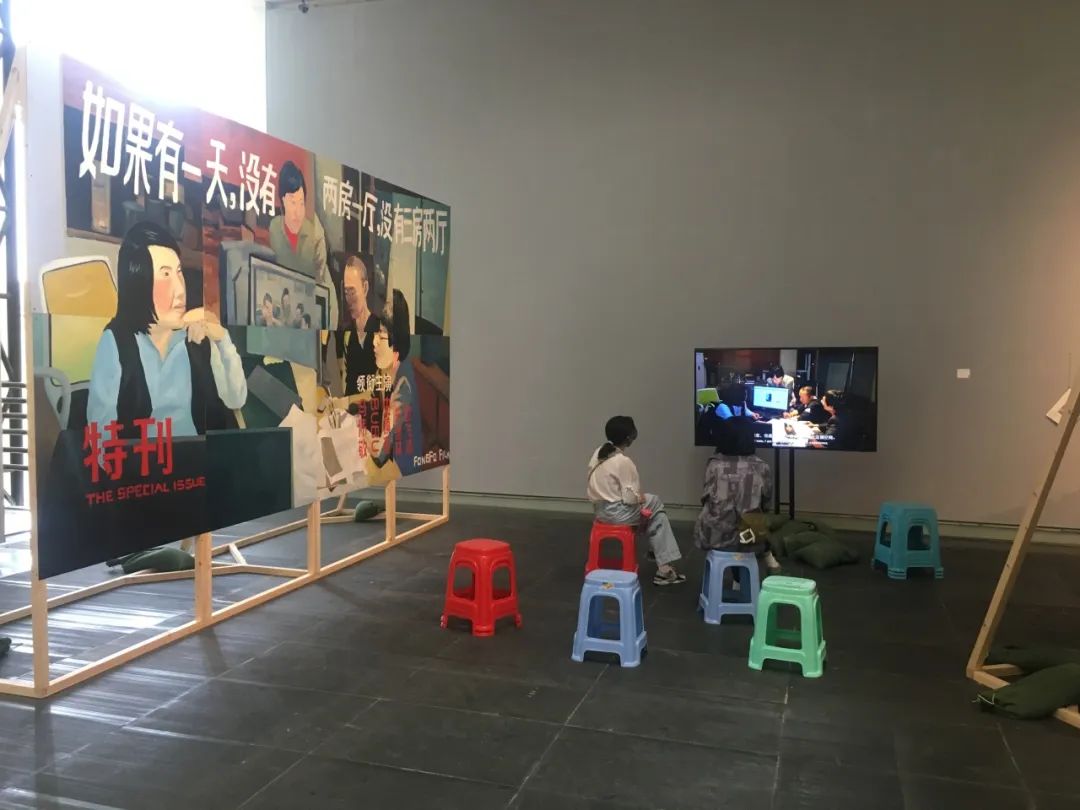
冯火在parasite展出《特刊》
©️ 冯火
©️ 冯火

录像局 原址 2012
©️ 录像局
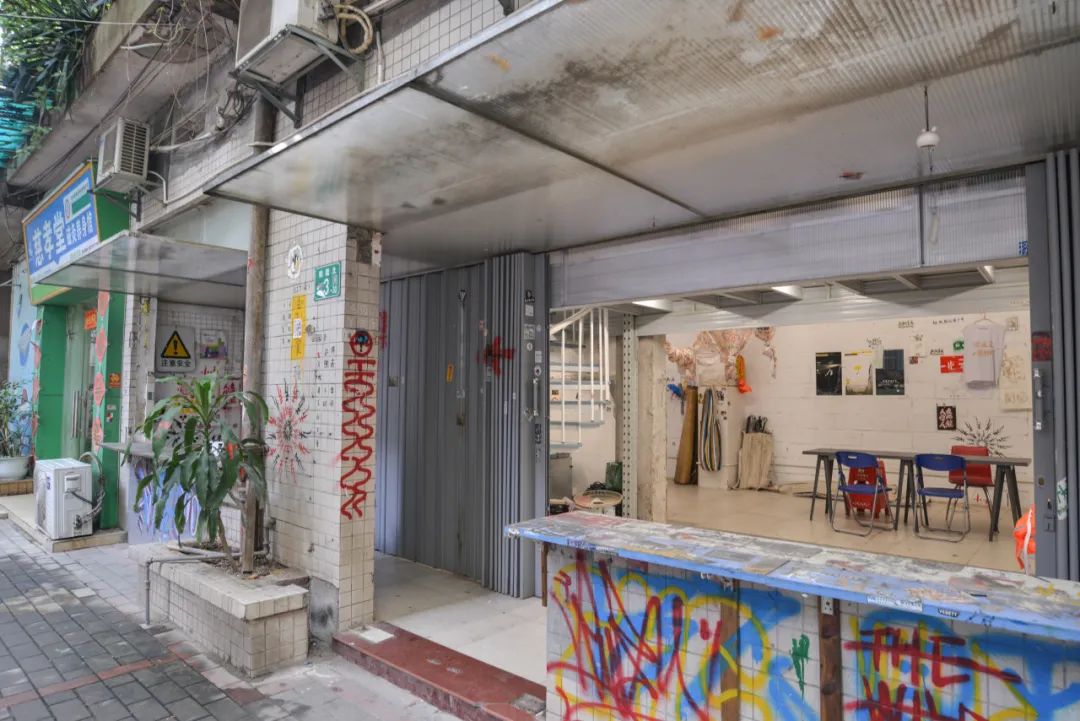
前台osf / 黄边站,2022
©️ 前台osf / 黄边站

A research project based in Guangzhou, China, Abracadabra! seeks in-depth communication and information sharing with active self-organizations; within a not yet clearly defined stage of liminality, the project captures and presents the phenomenon of “creation” and practice methods found in these self-organizations — the new generation of art practitioners commonly hold a more relaxed attitude of “mutual help” and “collaboration,” though each may have their own distinctive, highly individualized working methods.
Utilizing the research like a magical phrase, focusing on scenes of action and working methods behind a wide range of productions, we hope to highlight the unique power embodied in the oral accounts and achievements of these practitioners, as well as to further reflect on whether such community-based, self-organized actions could provide alternative ways of practice for Art (or other fields). The issues we focus on include, and are not limited to, how the actions of different creative groups begin to take root; the ways in which collective practice forges new modes of organization and motivates self-renewal in individuals; the significance of friendship in collective practice, etc.
Findings from our first period of research is curated into a small archival exhibition, developed mainly based on the working methods and text production (here defined as the generation of written records in any form) of four self-organizations: Fong Fo, 44Monthly, High Pressure Club, and Jasagala. Some of them put special emphasis on intellectual communication and collisions between members, some are intended to “bring together friends from diverse backgrounds,” some are producing low-cost, long term, “fluid” periodicals, and some adopt collaboration as a method of self-education. This exhibition attempts to illustrate several aforementioned approaches, aided by what has come out of them (e.g. publications and moving image works).
Practice is always on-going; through continuous self-analysis and self-reflection, practitioners are able to establish innovative forms of output, which expand, in turn, our existing perception of what is art, and how it is produced.
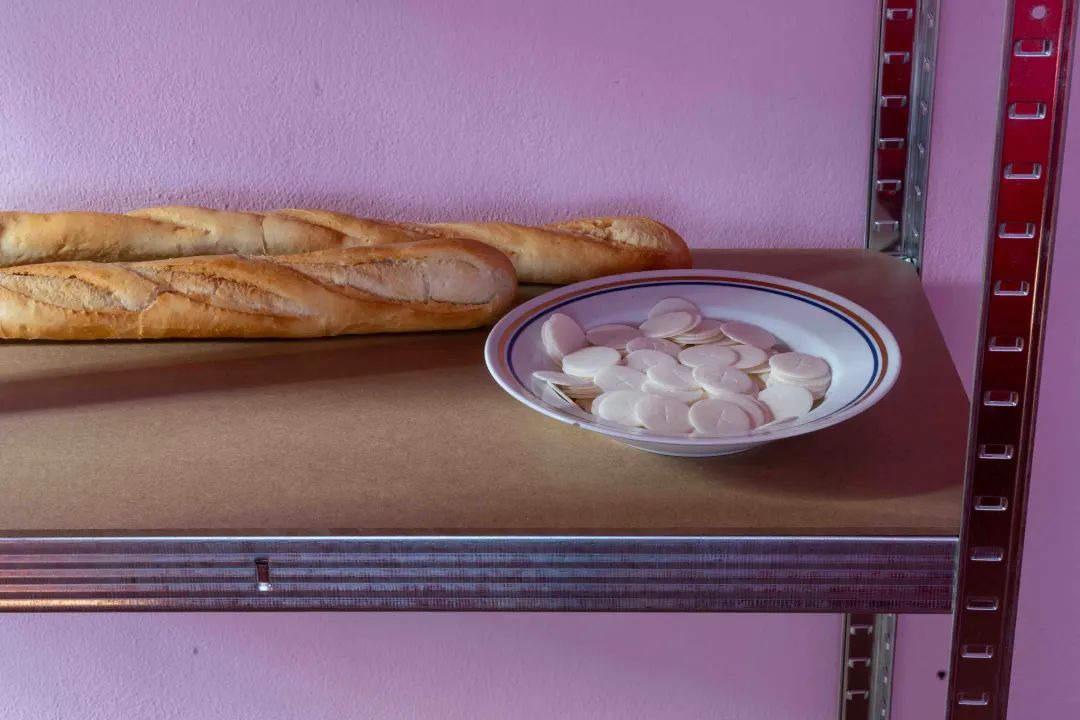
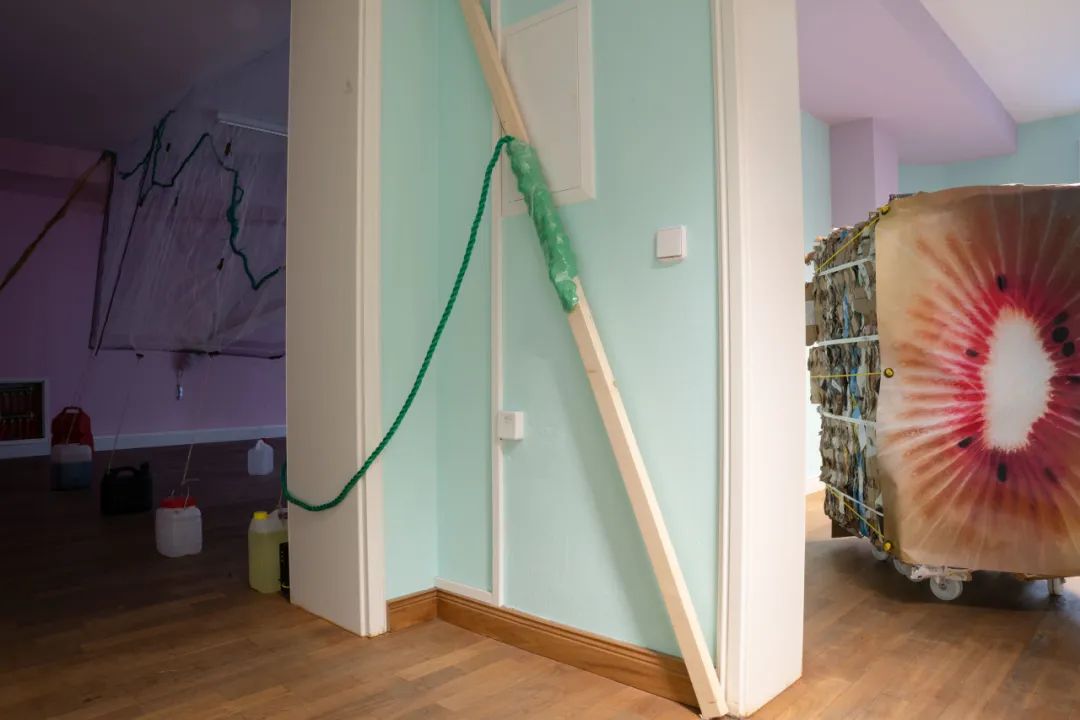
Exhibition
. Supply Chain Indigestion
20th May to 16th of June 2023
©️ with the rubbles
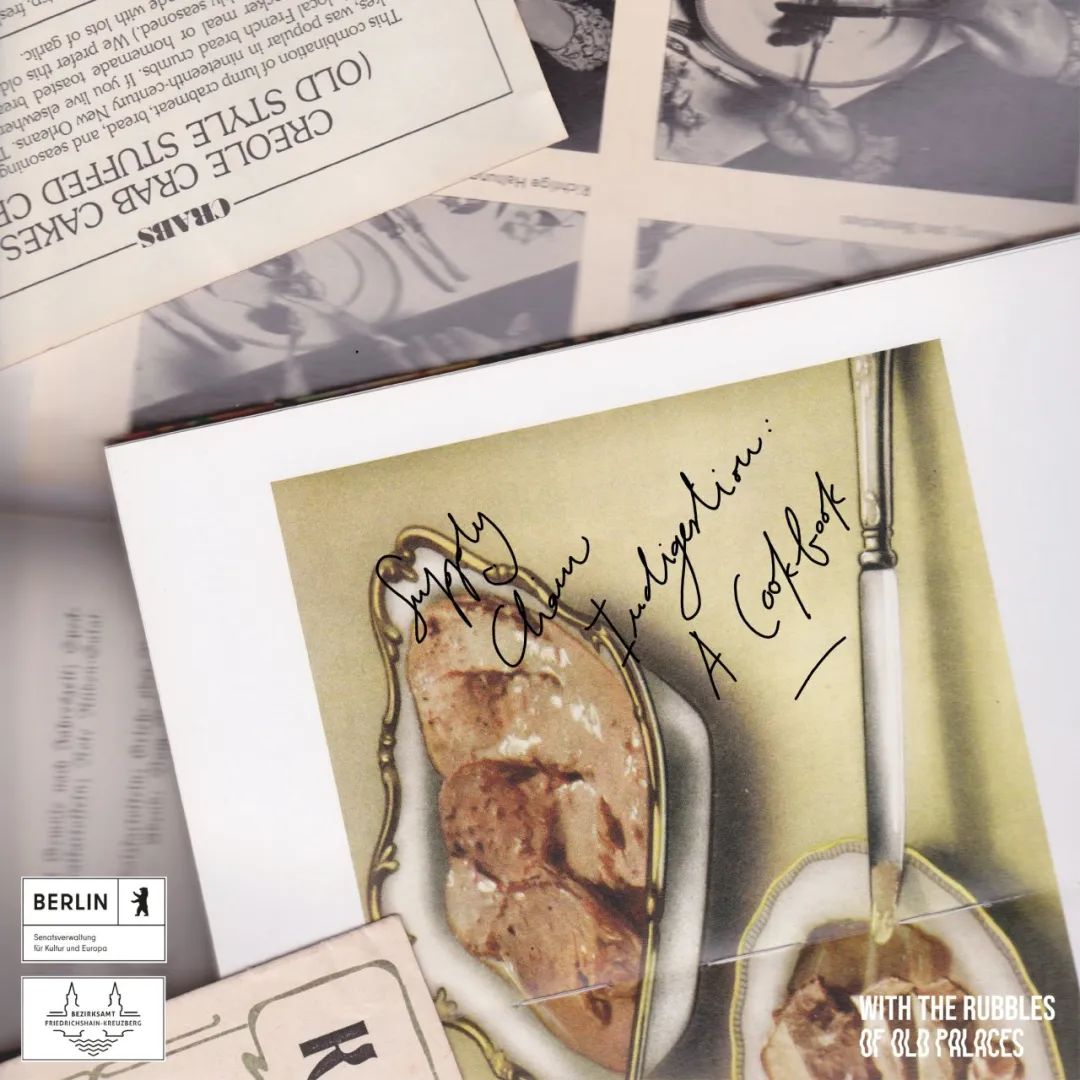
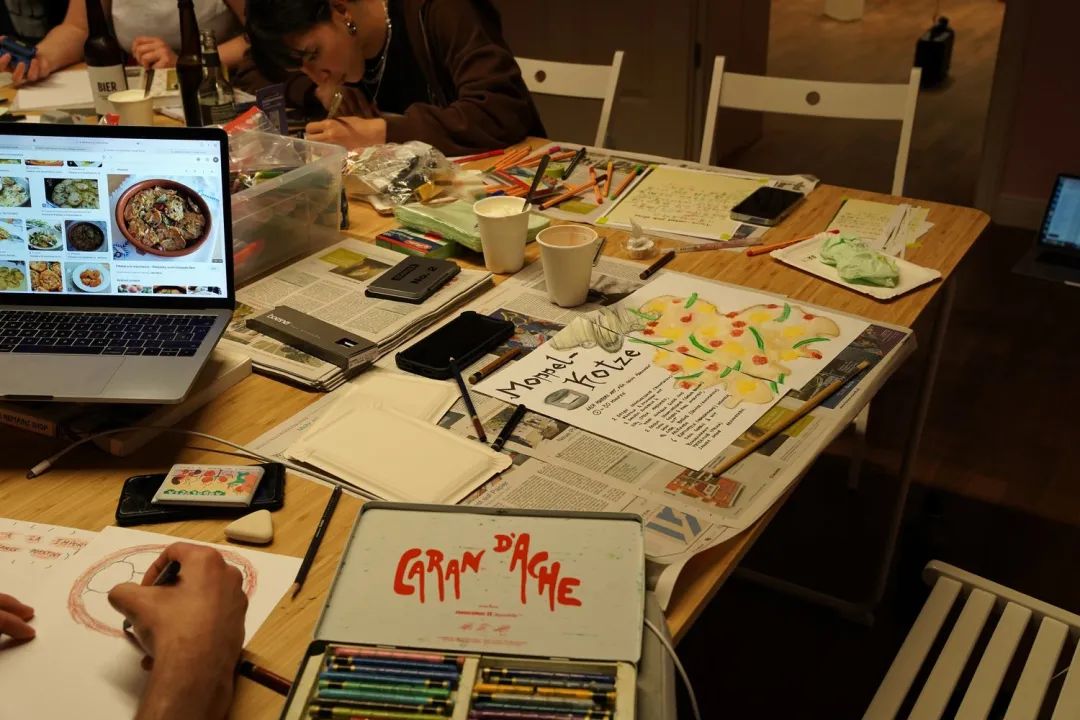
Workshop
Supply Chain Indigesion : A Cookbook
©️ with the rubbles
Supply Chain Indigesion : A Cookbook
©️ with the rubbles
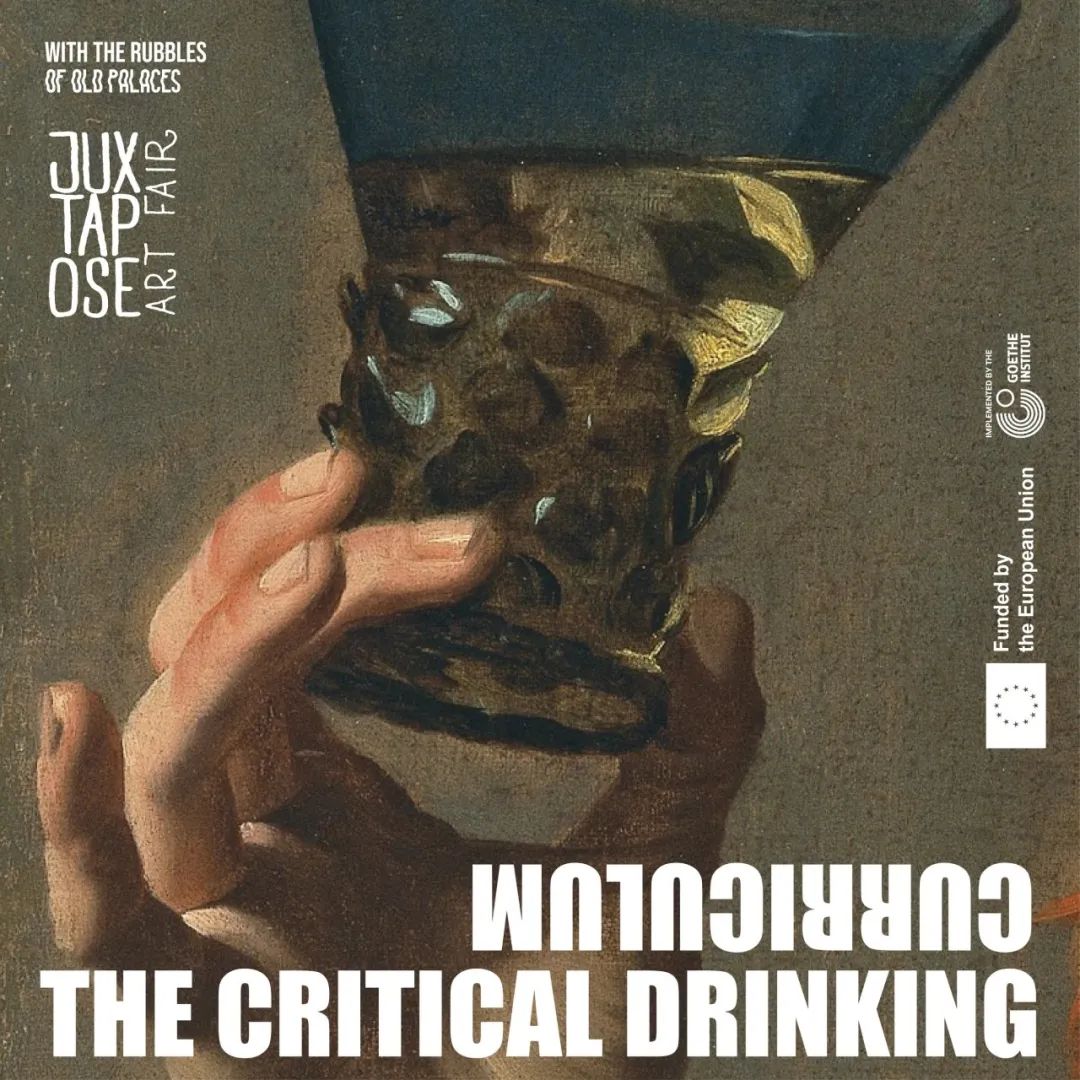
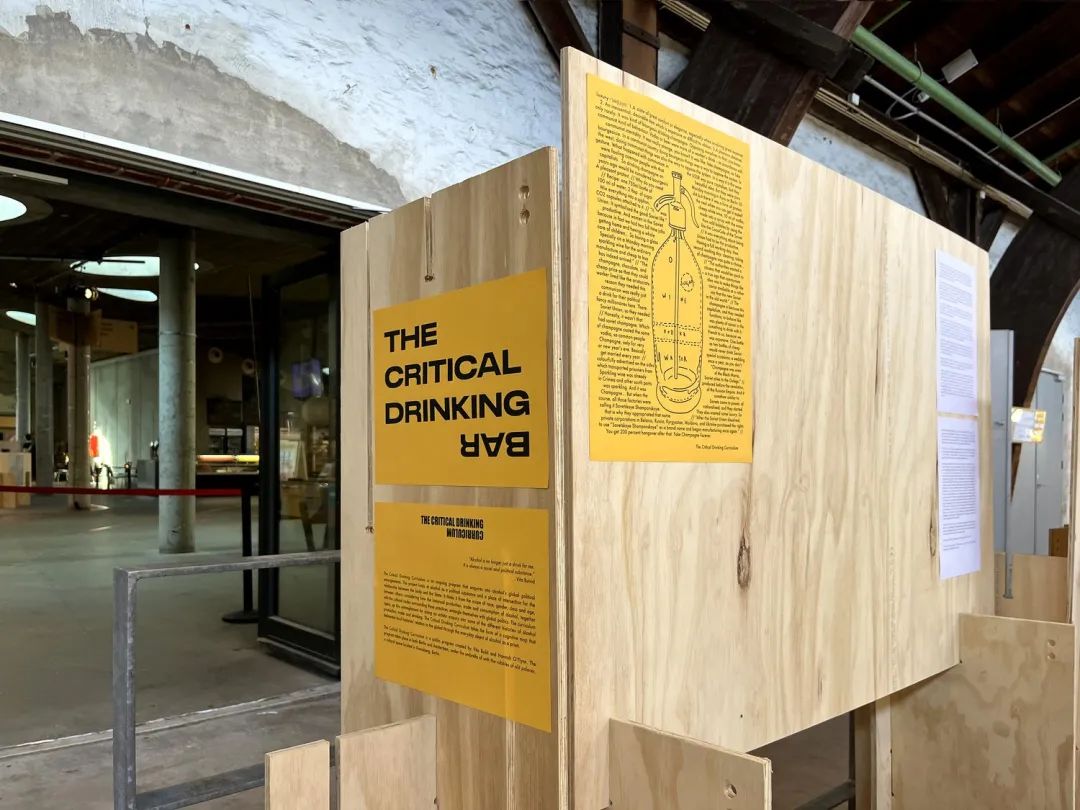
Critical Drinking Curriculum at Juxtapose Art Fair
©️ with the rubbles
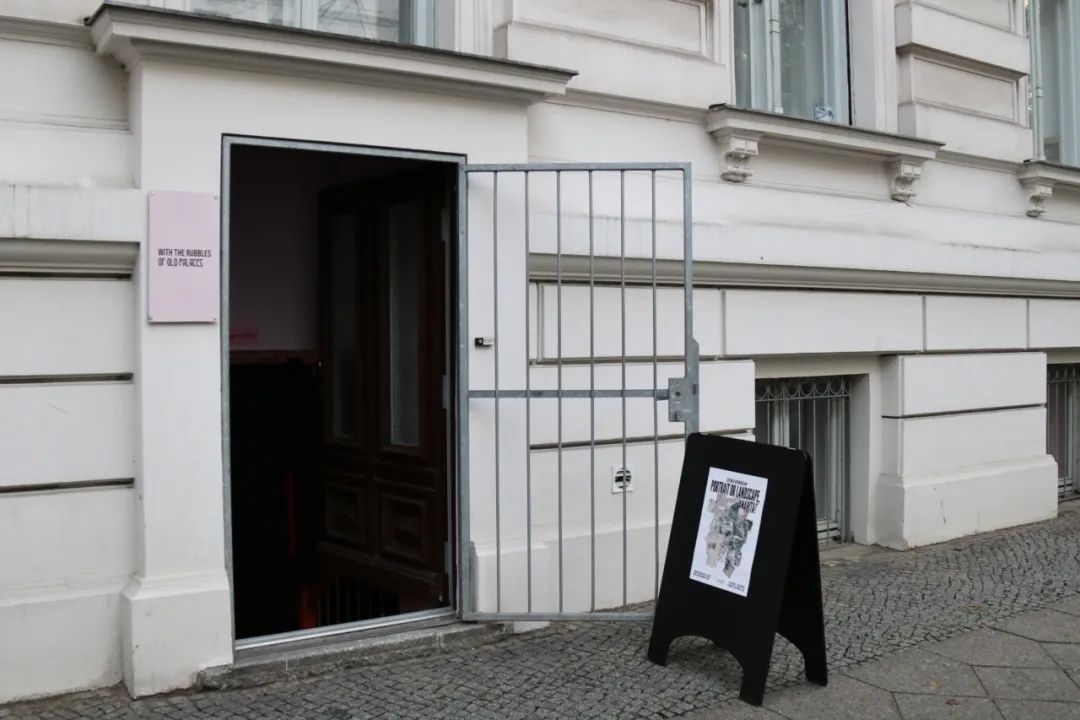
Portrait or landscape, Anahita?
Entrance to the space
©️ with the rubbles
Entrance to the space
©️ with the rubbles

Das Japanische Haus is a cultural non-profit organization based in eastern Leipzig Germany, which also has branches in Japan and Georgia. Welcome to “ Das Japanische Haus”!
Das Japanische Haus (DJH) has been acting as a bridge between international exchange and local actions and events in the fields of promoting democracy and tolerance since its establishment in 2011. The association was founded by people with immigrant backgrounds (two Japanese people) with the aim of strengthening social cohesion in the eastern part of Leipzig. Since then, DJH has been dedicated to building bridges between different cultures. As an immigrant organization, we have been able to connect well with people from different cultural backgrounds through our past activities and experiences. In Eisenbahnstrasse in the eastern part of Leipzig, DJH offers various activities such as the weekly cooking and food program "Kitchen for All" (also combined with music and art), providing a low-threshold international cultural experience for the area. Through close connections with other stakeholders in the area, such as Pöge-Haus, Children's Adventure Restaurant, and Bülowviertel, the association is able to disseminate Japanese culture on a larger scale and provide a wide range of services.
Since 2012, when we opened on Eisenbahnstrasse, we have been beautifying our space little by little with donated and self-built furniture. "Küche für Alle ( Kitchen for all) " is the "living room" open to everyone. We are delighted to have participation from people with or without an immigrant background. The dishes we provide are usually vegan (without meat or animal products), and the meals are for free.
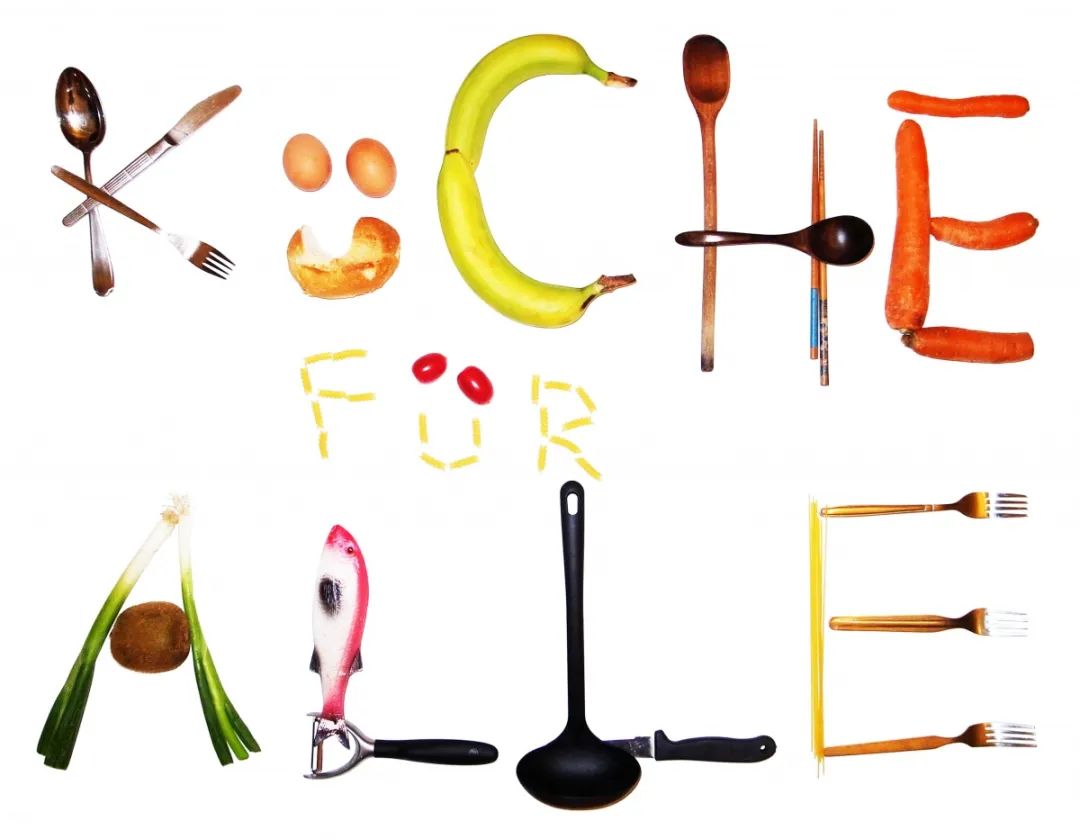
Kitchen for all
适合所有人的厨房
©️ Das Japanische Haus
适合所有人的厨房
©️ Das Japanische Haus
Every Thursday and Saturday night we cook together at the Japanese House as part of the "Kitchen for All" programme.
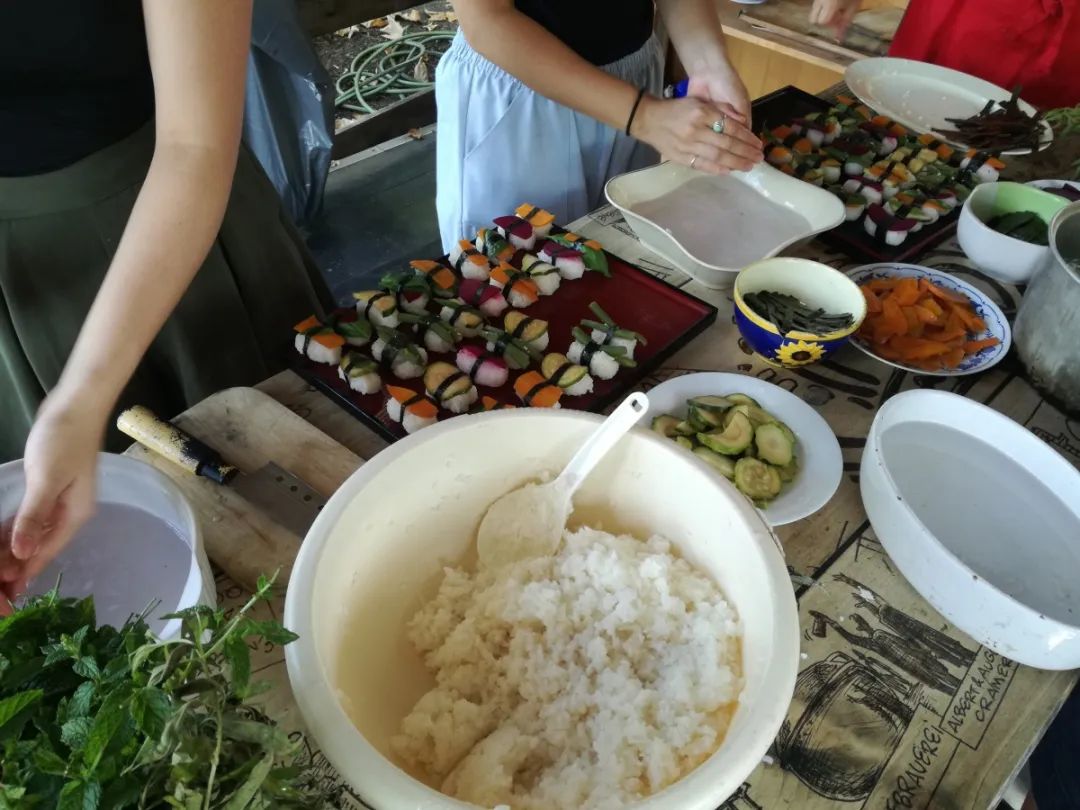
We all make Garden Wild Vegetable Sushi
大家一起制作花园野菜寿司
©️ Das Japanische Haus
大家一起制作花园野菜寿司
©️ Das Japanische Haus
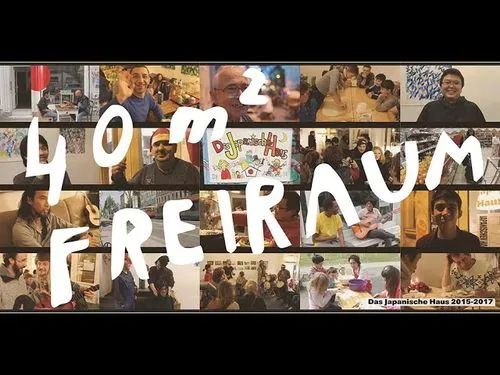
The documentary of Das Japanische Haus
40m2 Freiraum
59mins 59 seconds
40m2 Freiraum
59mins 59 seconds
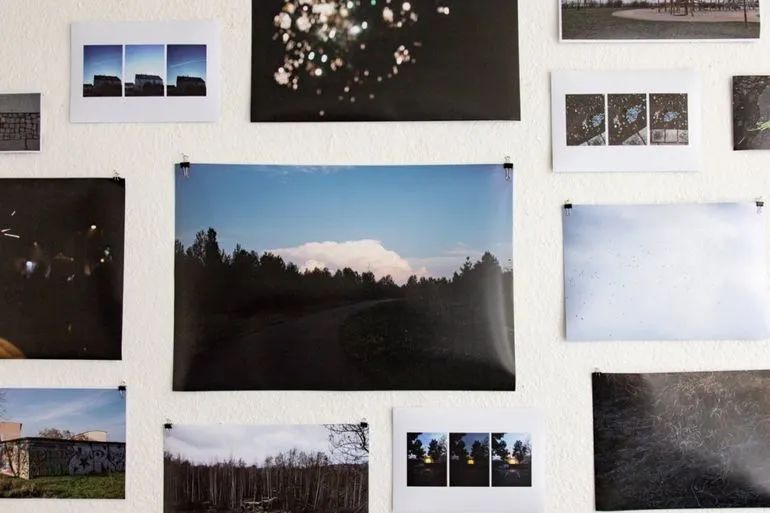
Exhibition at Das Japanische Haus
1km Umkreis: Yukiko Tanno und Kim Hyeonah
©️ Das Japanische Haus
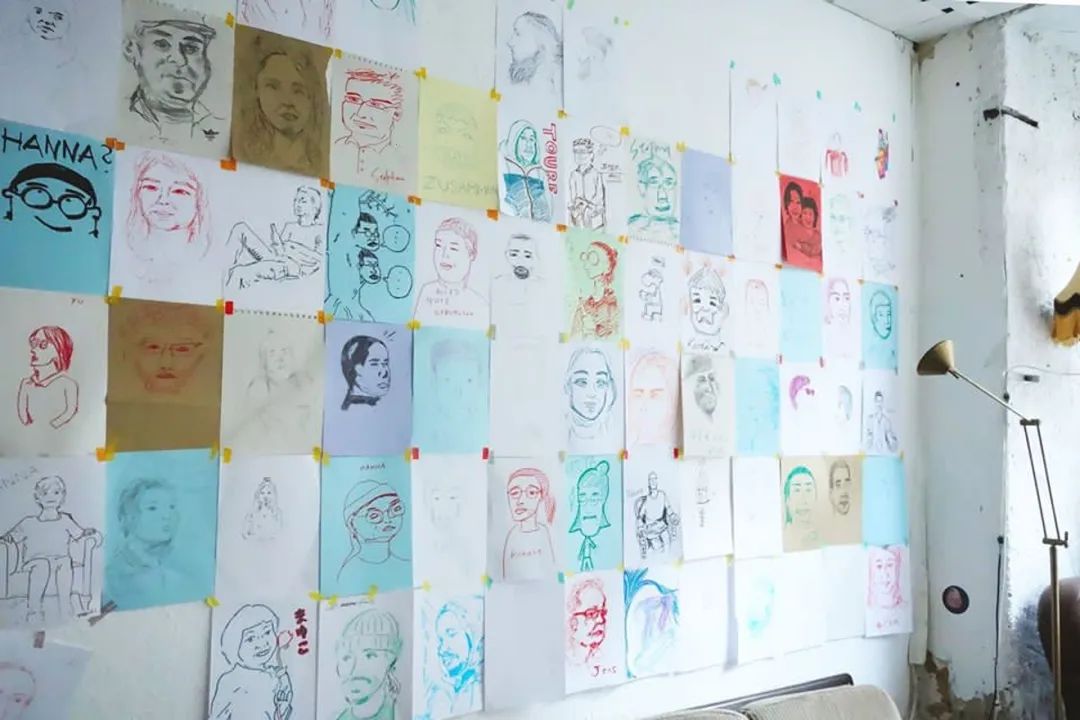
Workshops at Das Japanische Haus



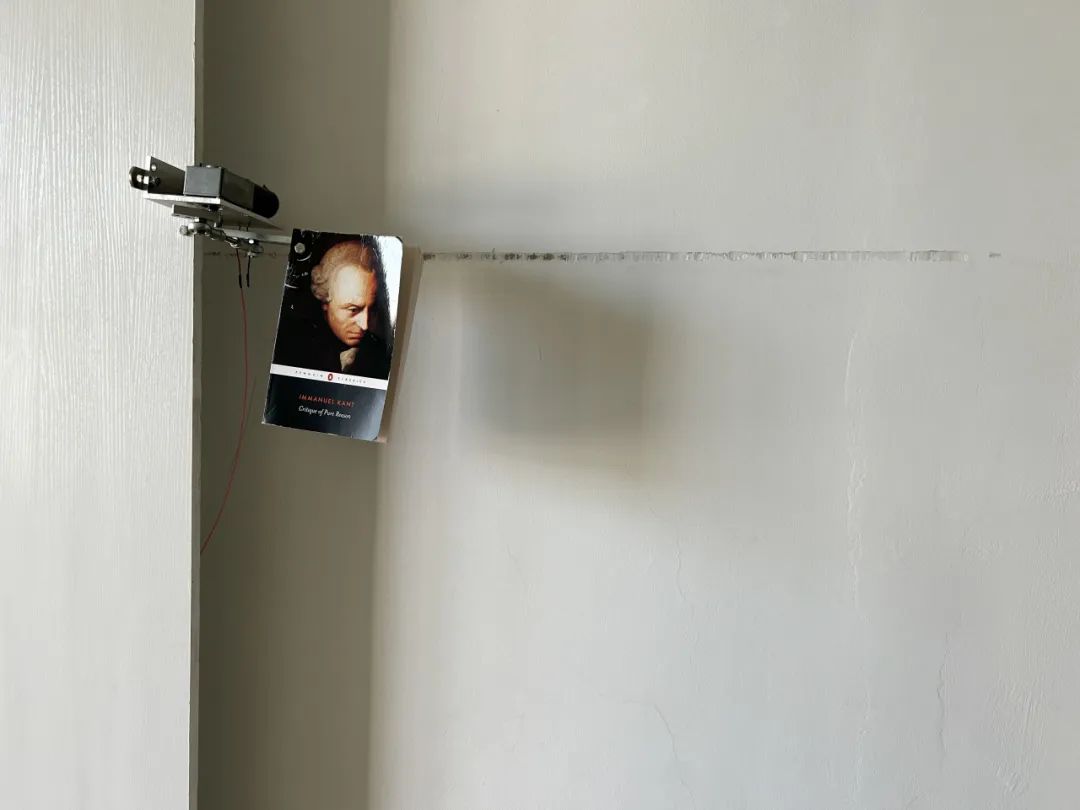
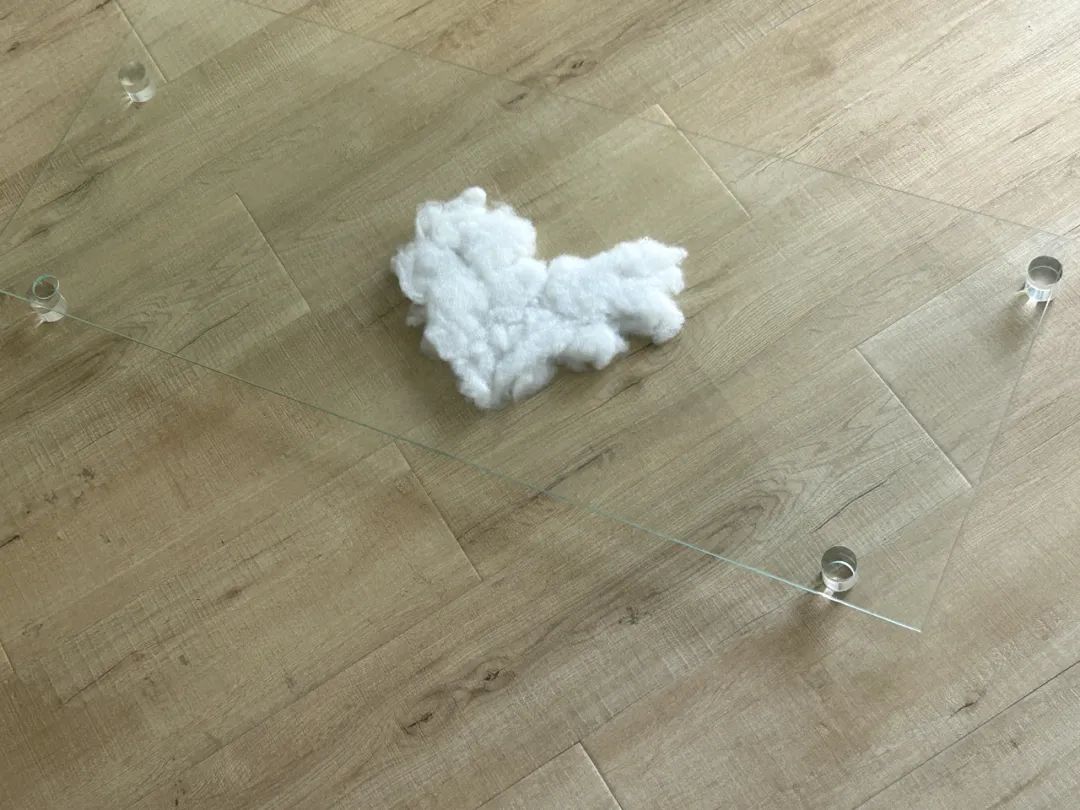
The Body without Organ of the Exhibition 2023
Sculpture series, multiple materials, variable size
This sculpture series is mainly made with the leftover materials from Cusp’s previous exhibitions and the backstage of the space. The starting point of the sculpture series is to undertake exhibition as an exhibition process, from the backstage to the front, from the inside of the space to the outside, from one exhibition to another. The process is always detachable, connectable, reversible, and modifiable. The material creation is the reterritorialization of exhibition particles, with totally different territorial motifs, territorial counterpoints, melodic landscapes formed by territorial counterpoints, and heart shapes.
Fengfeng(丰丰), engages in everyday practices. His works are mainly on handcraft installations and videos. He is now working at Hunan Normal University in Changsha.

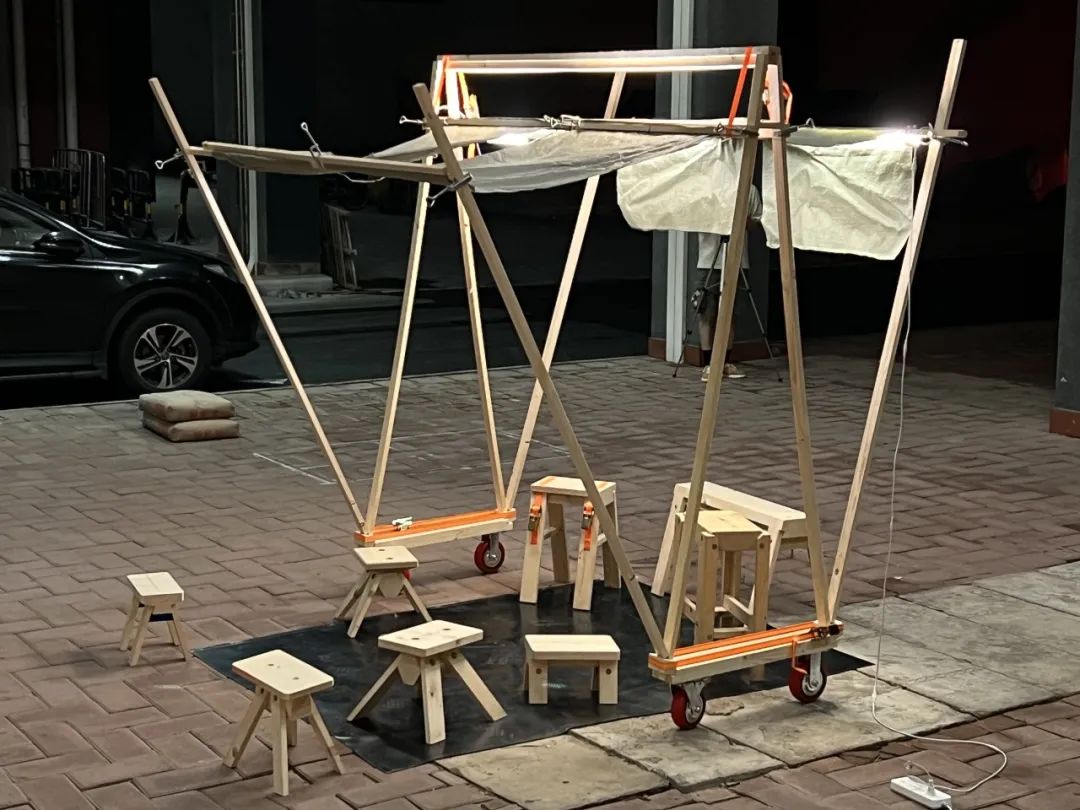

The draft of “Temporary connections with weight and maybe a roof” 2023
Make a "temporary space" out of the remaining materials in the space, dismantling and re-categorizing each time you leave. When you are finished, you can leave two drafts in the form of drawings.
Wang Chao (王超), Woodworking room enthusiast, long-term material creator, member of No.1 House of Finnish pine.

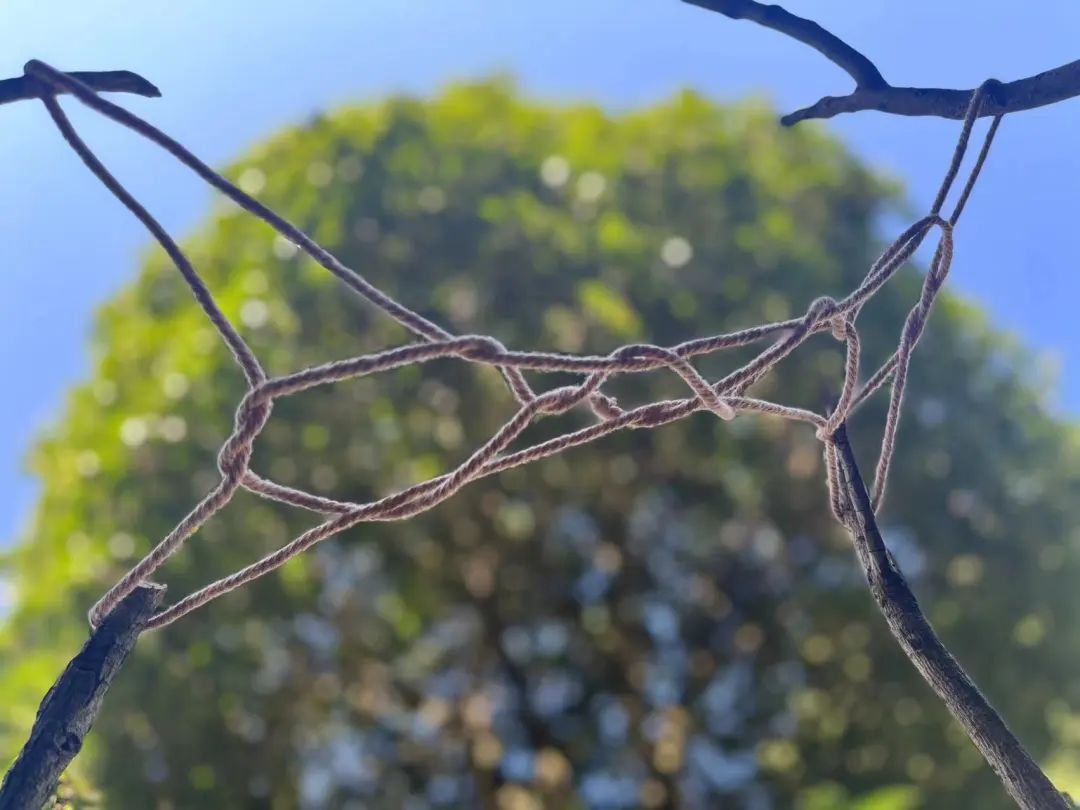
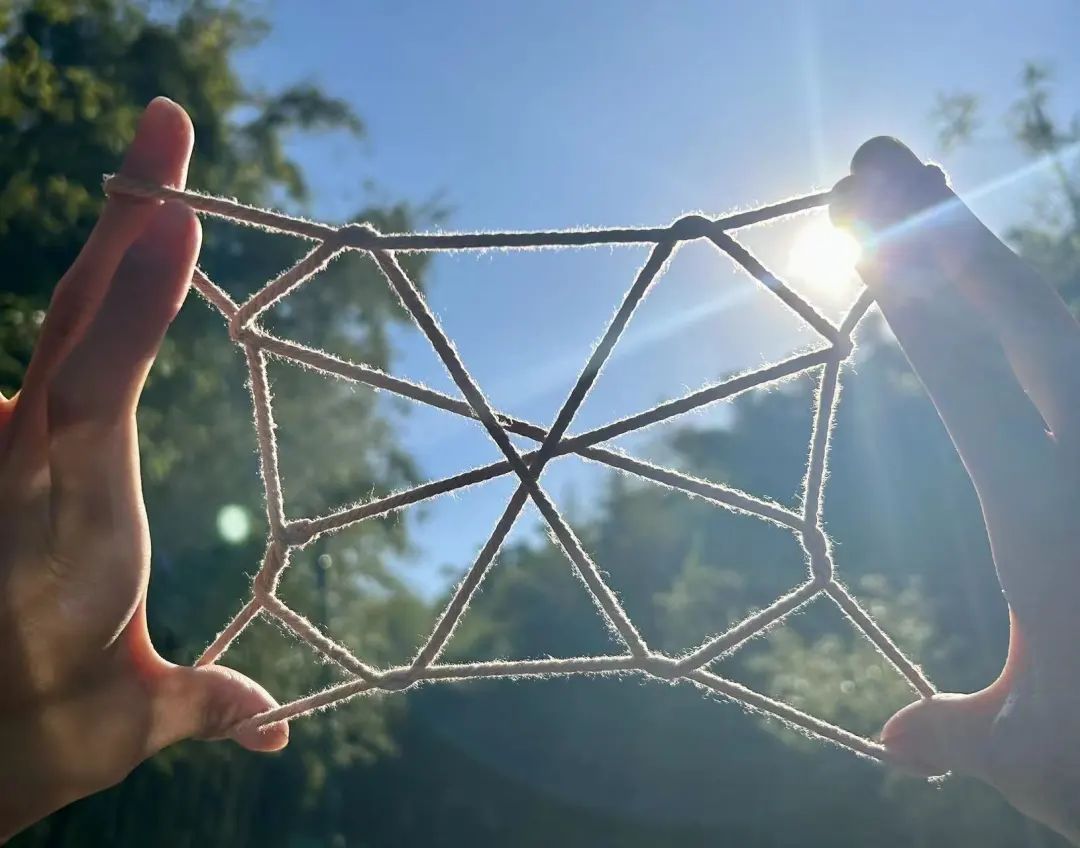
How do we conceive an ideal space? A space is made up of relationships. All the relationships within a space are made up of all the human and non-human actions. An action happens, it might hold for a while, or it fades and activates other actions, making up the dynamic of a constantly changing space. Making space is very much like the act of making string figures, an ancient game passed on through our hands and fingers. As Donna Haraway describes in Staying with the Trouble, “Playing games of string figures is about giving and receiving patterns, dropping threads and failing but sometimes finding something that works, something consequential and maybe even beautiful, that wasn’t there before, of relaying connections that matter, of telling stories in hand upon hand, digit upon digit, attachment site upon attachment site, to craft conditions for finite flourishing on terra, on earth.” Making string figures might take more than one. To activate this communal space, I invite to you make string figures with us. To weave the patterns among you fingers, and find structures to hold it.
Jiang Ziqi(蒋子琪) works as an artist, translator and editor. Her artistic practice explores the entangled relationship among humans and non-humans, among words and materials, taking form of video, installation, writing and printmaking. She is interested in various forms of collaboration, often initiating games, workshops, or public events in response to immediate political and environmental context. She is a member of artist collective M.Paradoxa (Zürich) and non (Hangzhou).

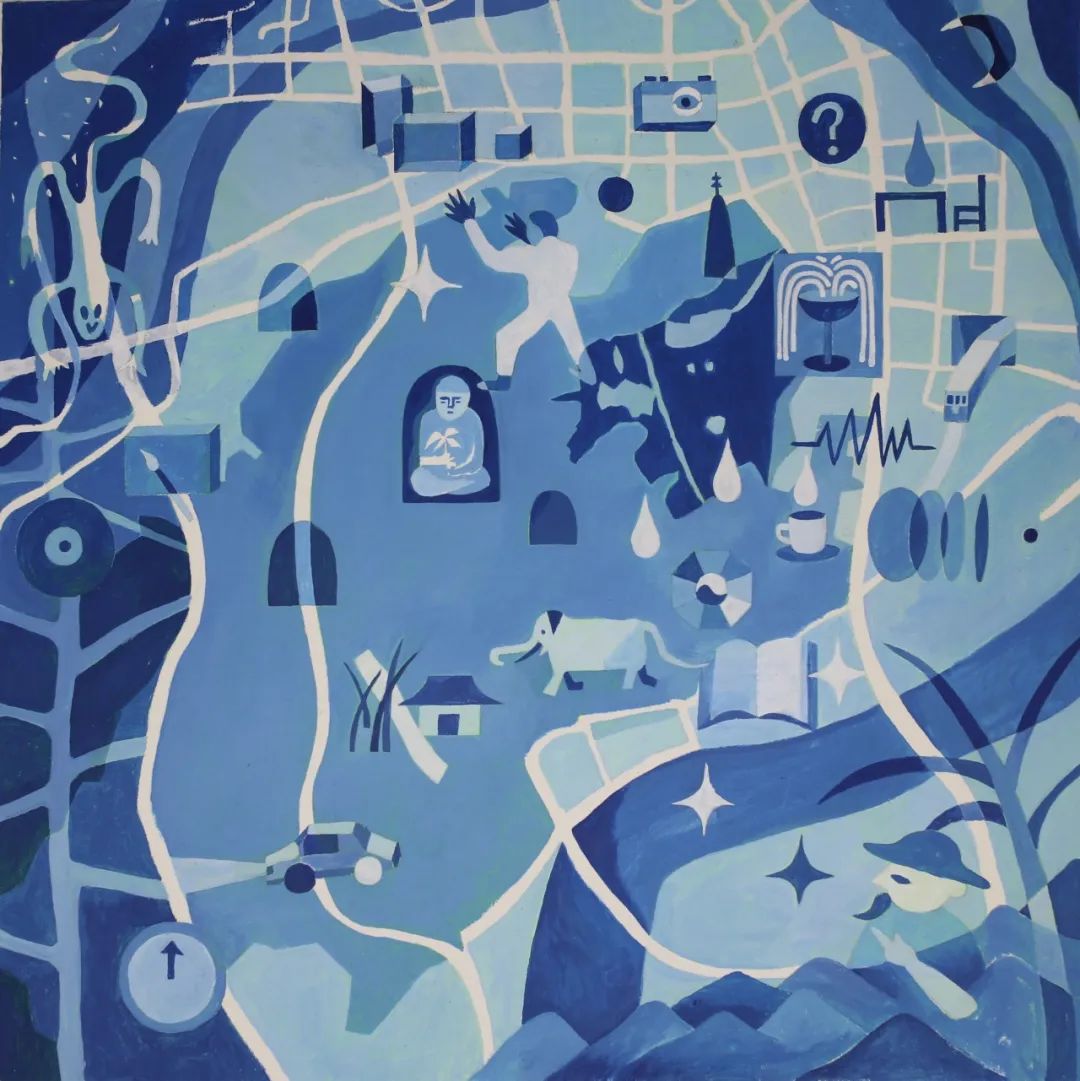
2022 abC The 7th abC Art Book Fair - Hangzhou Wandering Map 2022
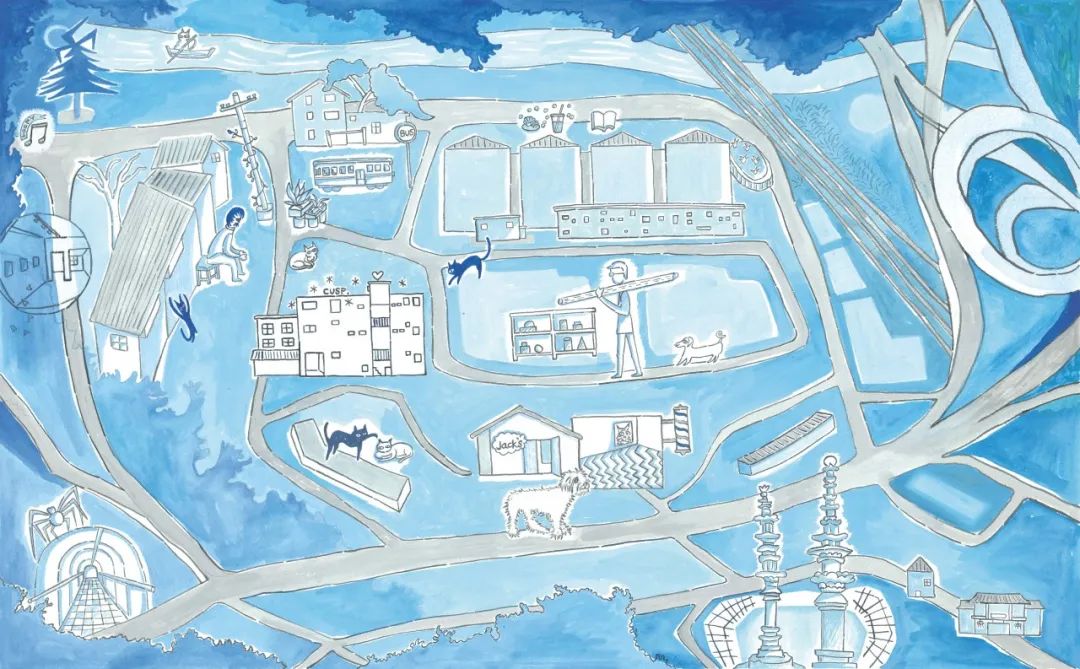
Map of community near cuspdot 2023

dudu, drawing, making books.


A hall located in the middle of two studios.
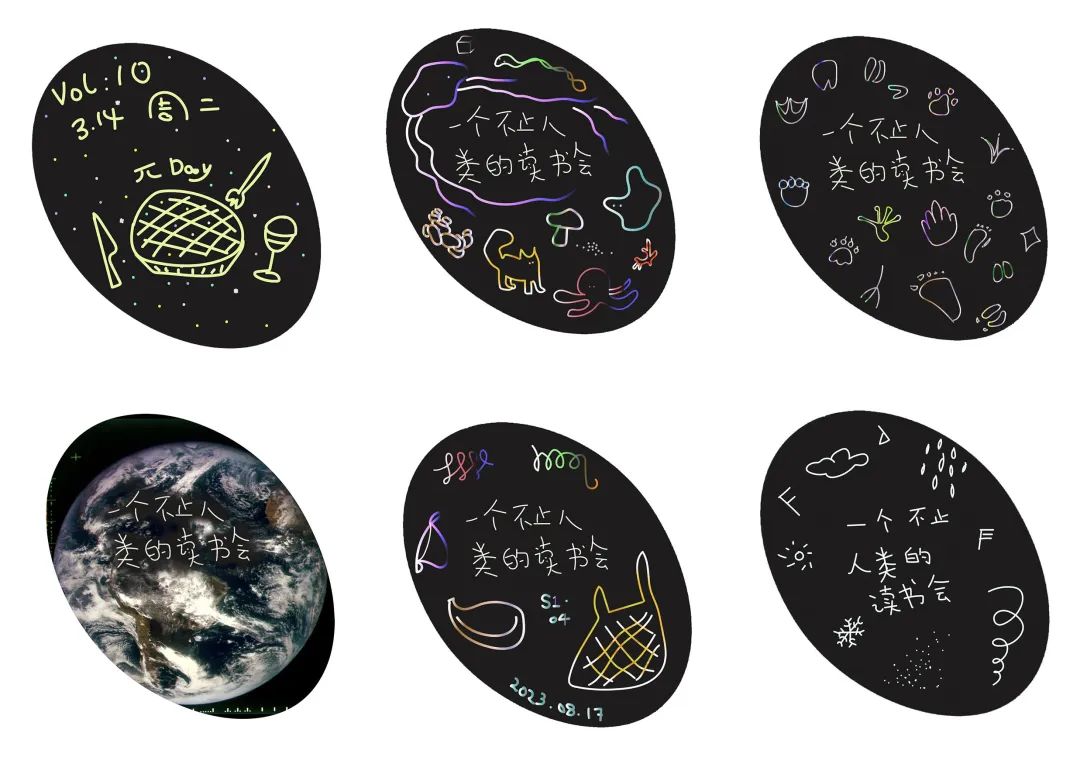

Schein Space is a transitional space converted from the street stores. It cooperates with artists according to local conditions and integrates “infinite" exhibitions into street stores that can be viewed 24 hours a day.


Imaginary Z is a shapeshifting monster whose tentacles are assembled with a variety of ever-expanding semantics—decolonial, anti-fascist, differences, intersectional, feminist, queering… and it moves and generates in a more abundant, more dynamic, more powerful, more affirmative, more beautiful way.
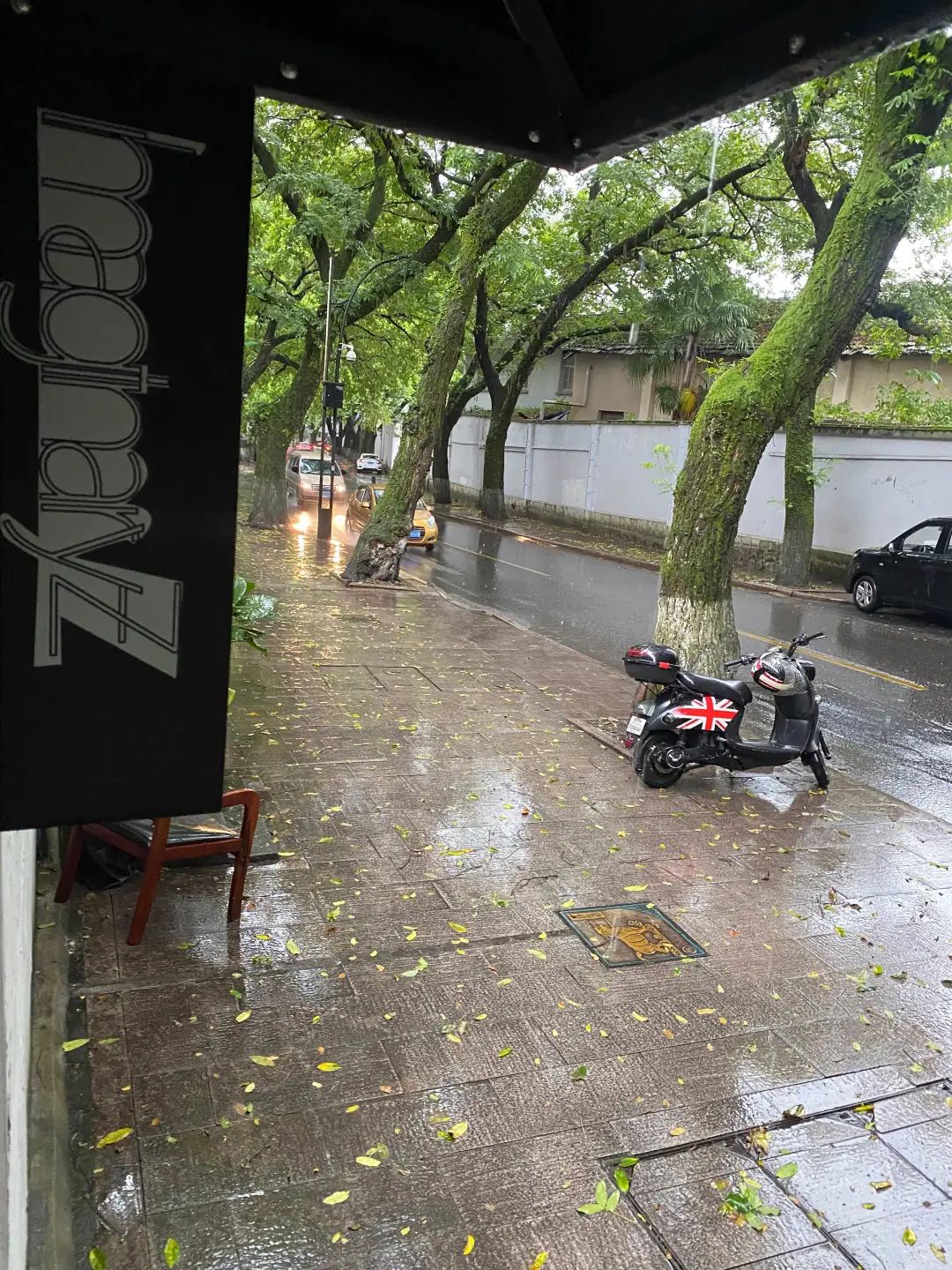

A space that operate alongside with bar and cafe, emphasizing daily associations and extraneous curiosities in life.
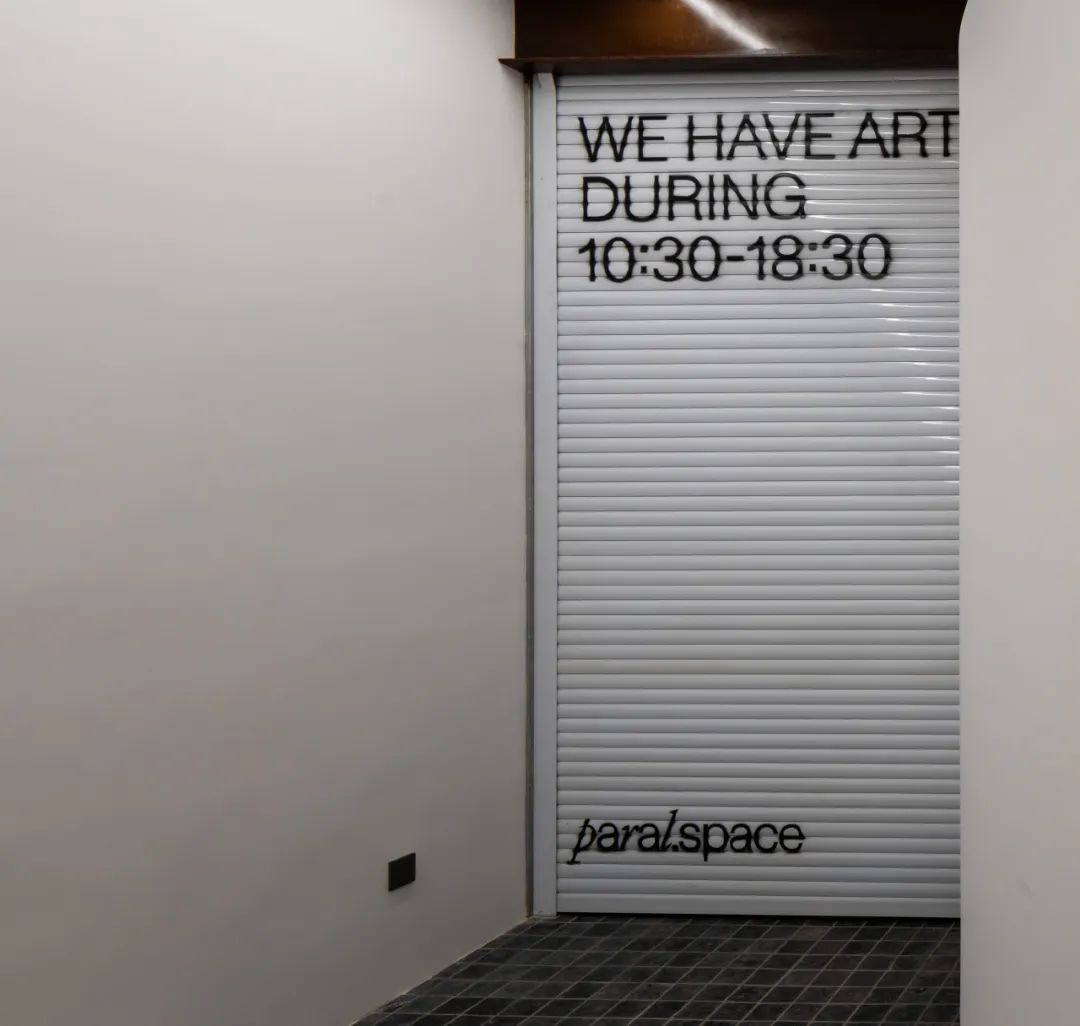

Small independent bookshop with a focus on literary books. Holds daily lectures, sharing sessions, book clubs and other kinds of activities related to reading or not.
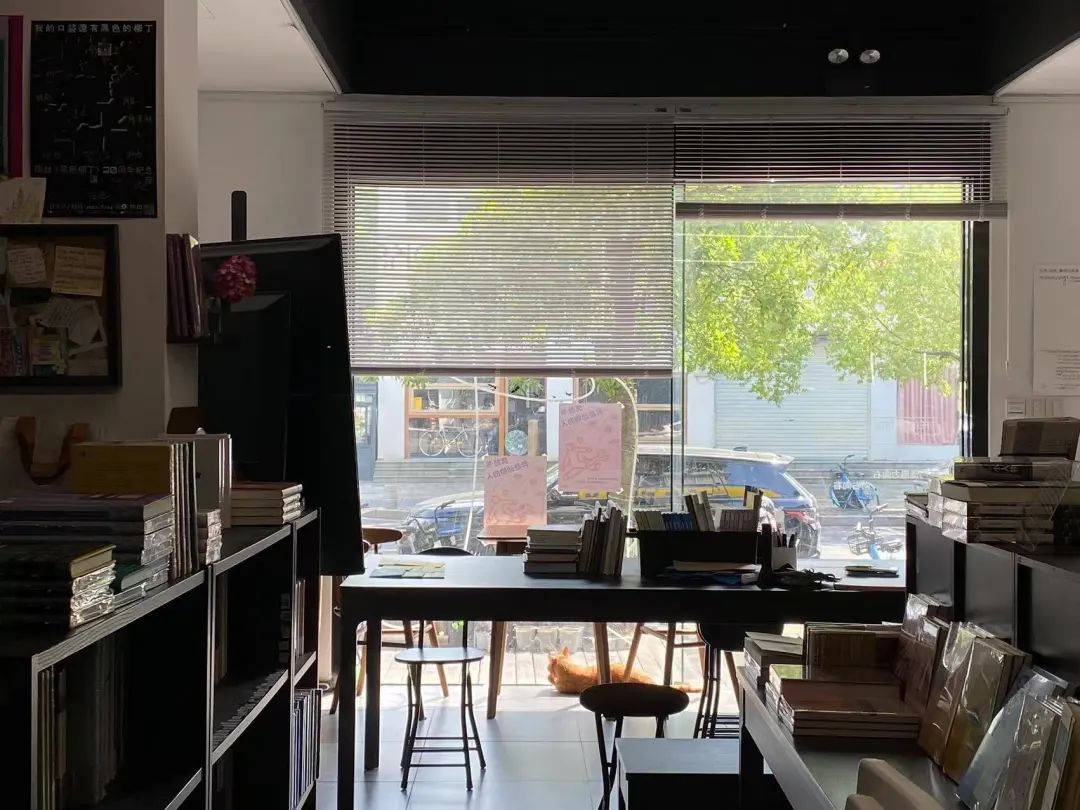

Loopy is a club that has been open since September 2016 in Hangzhou. The venue is divided into three areas: loopy live, loopy club, and loopy bistro. It has held many band performances, DJ parties, sound art and multimedia performances, screenings, workshops, markets and other cultural and creative events. With years of persistence with the objective dialectical aesthetic attitude, loopy combines music with other sensory experiences to continuously cultivate local community culture and nightlife scenes. At the same time, Loopy is constantly balancing the delicate relationship between its own culture and entertainment.
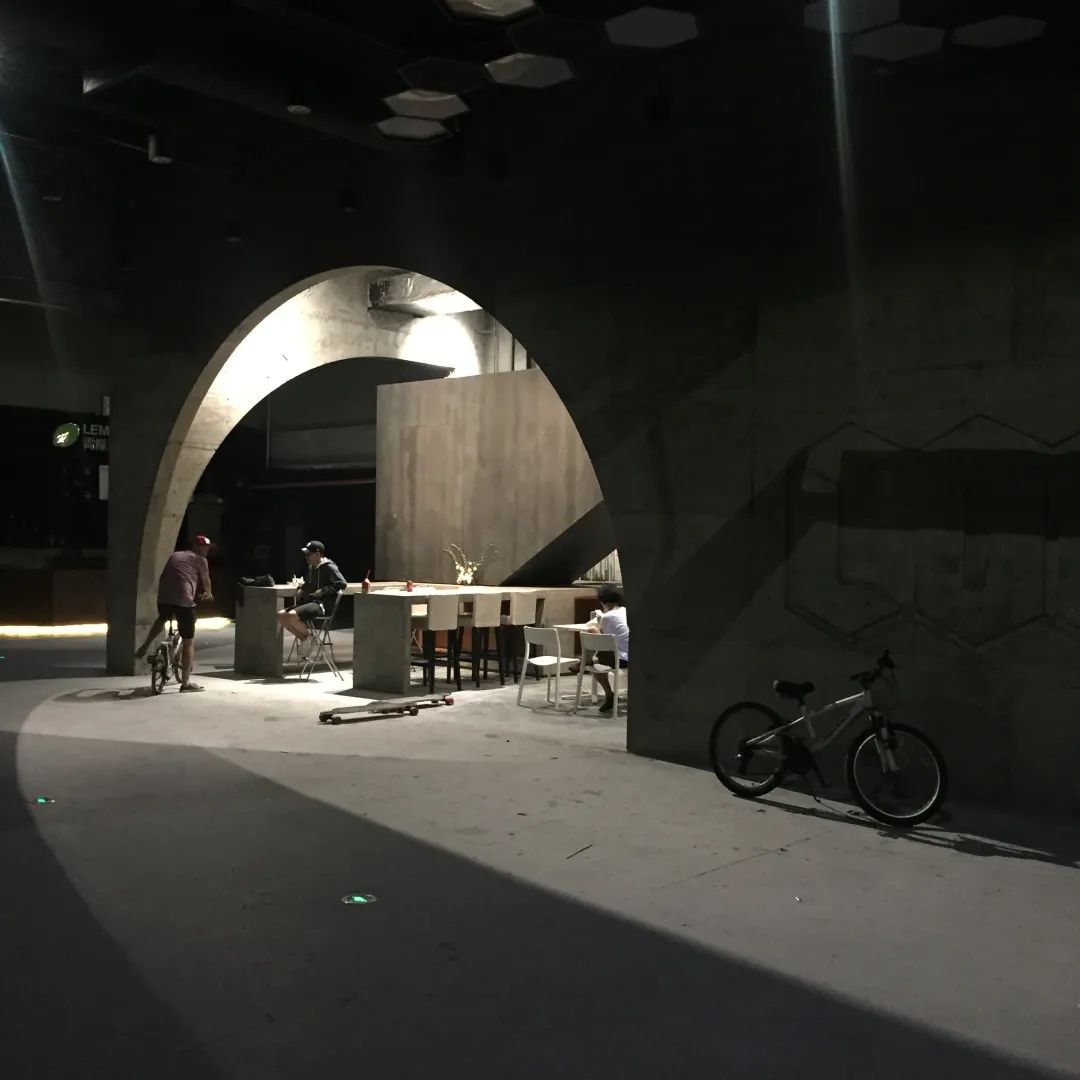



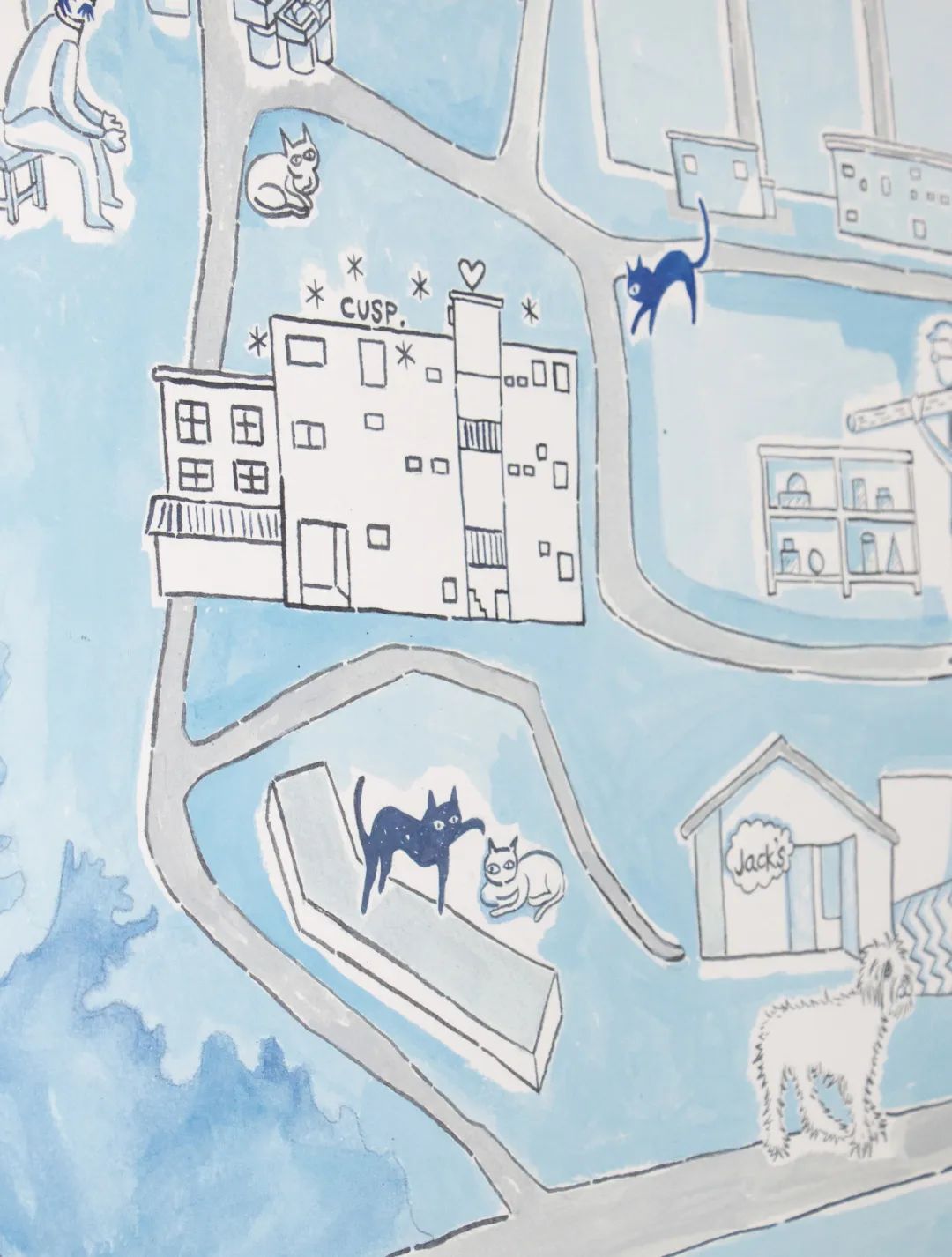
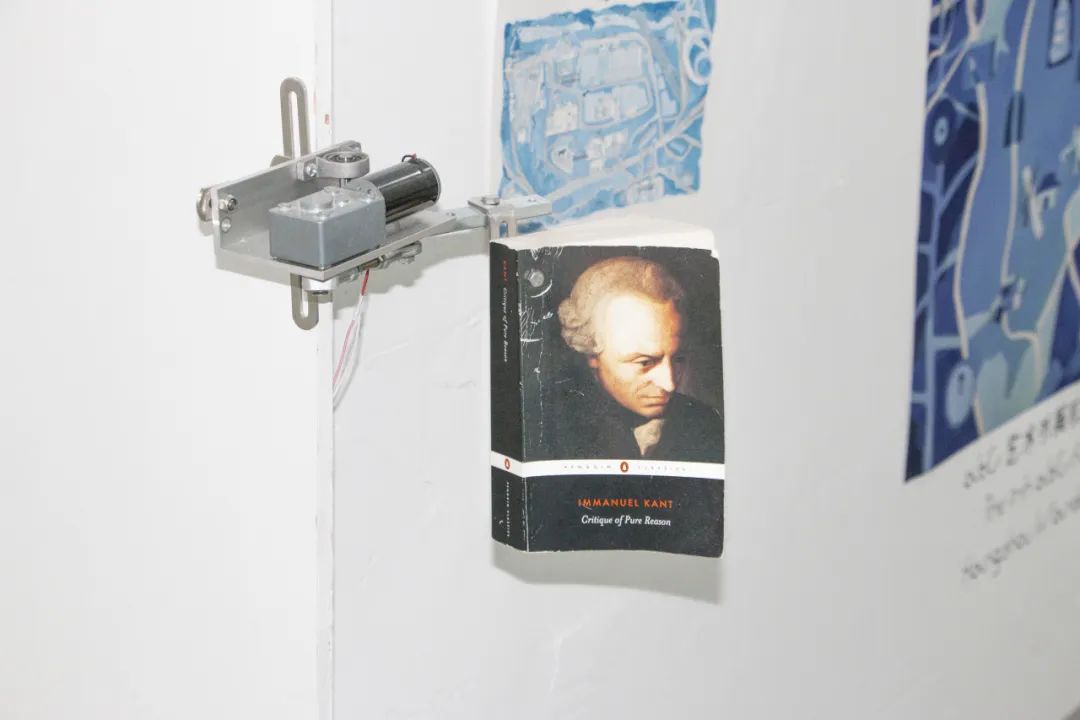


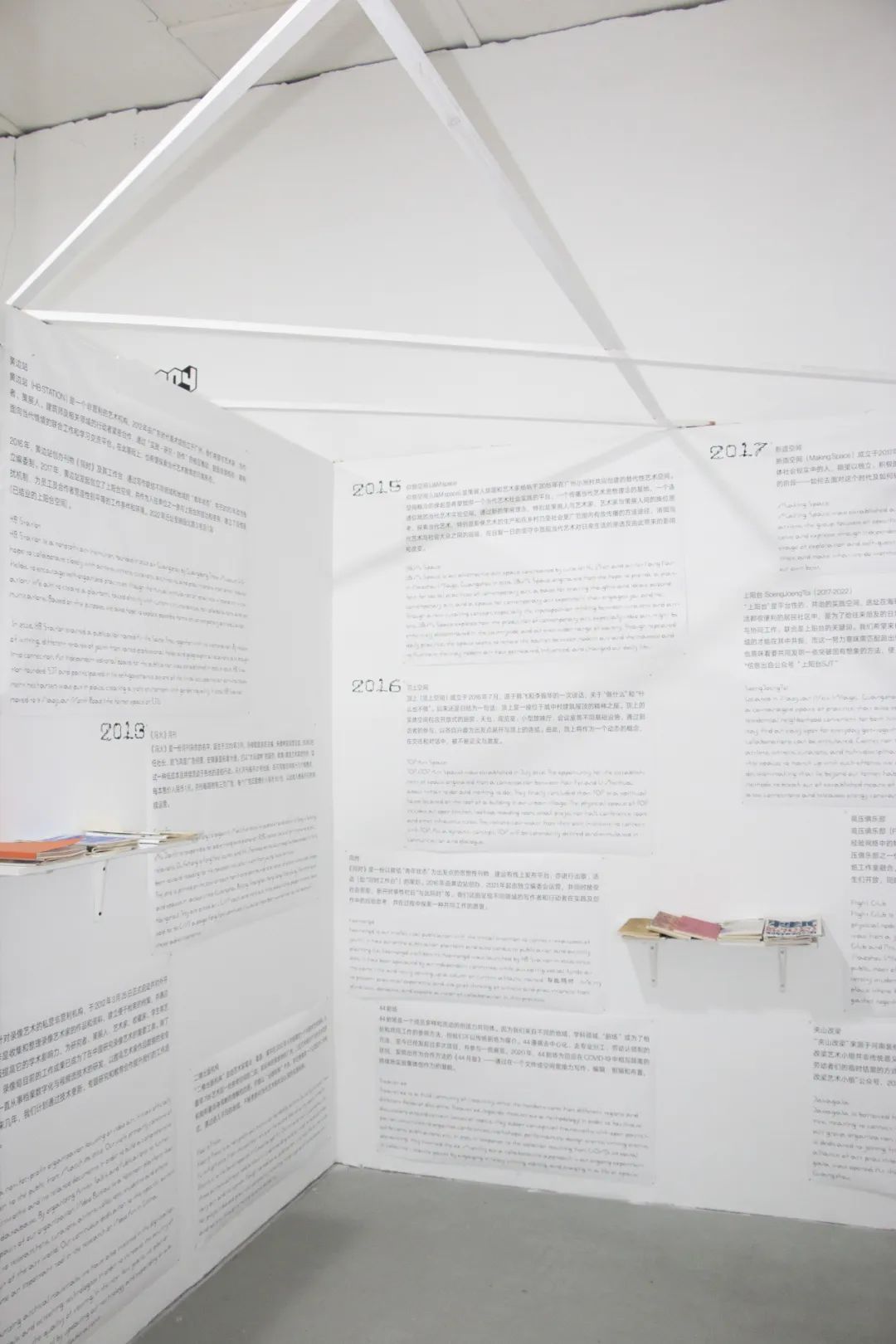

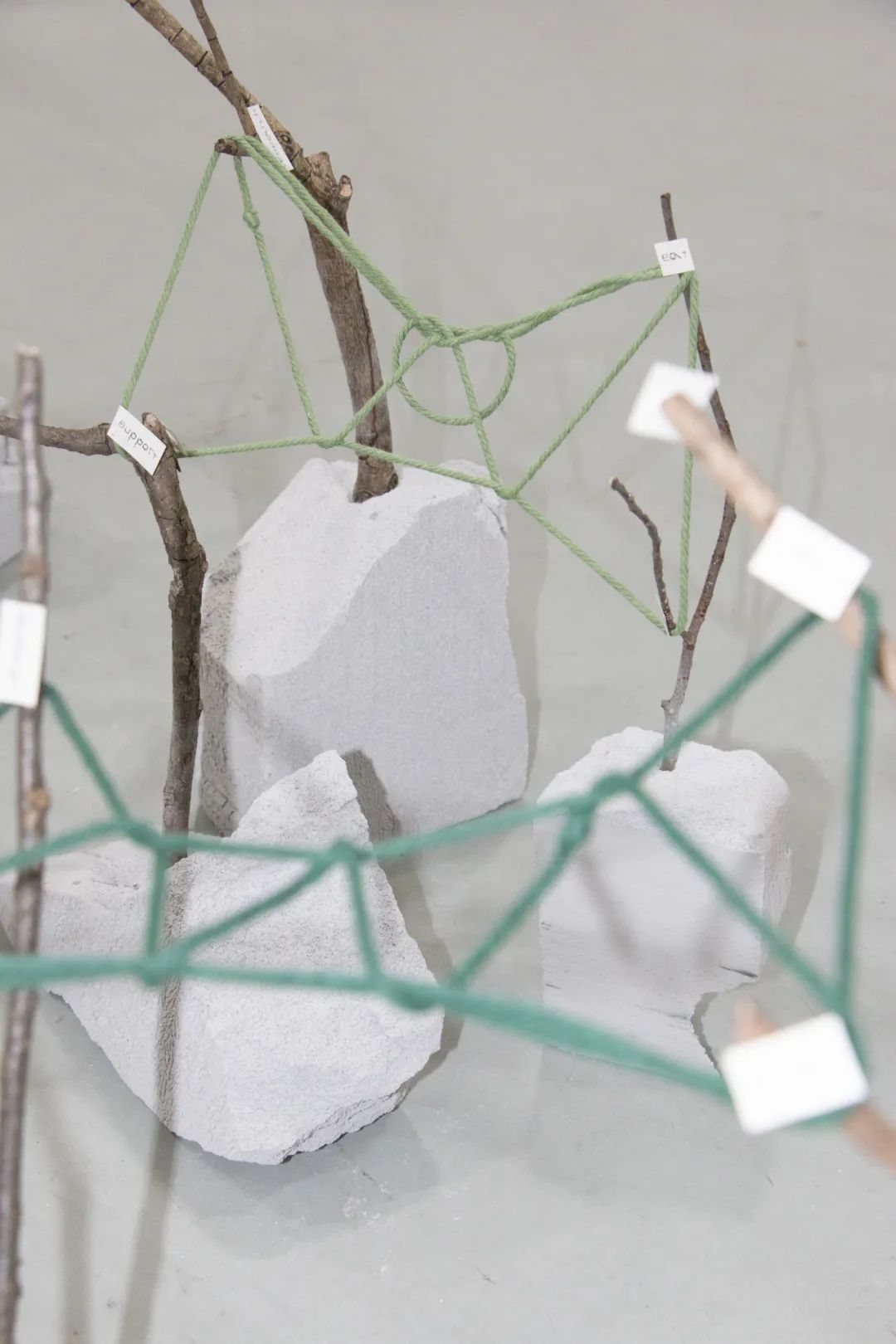

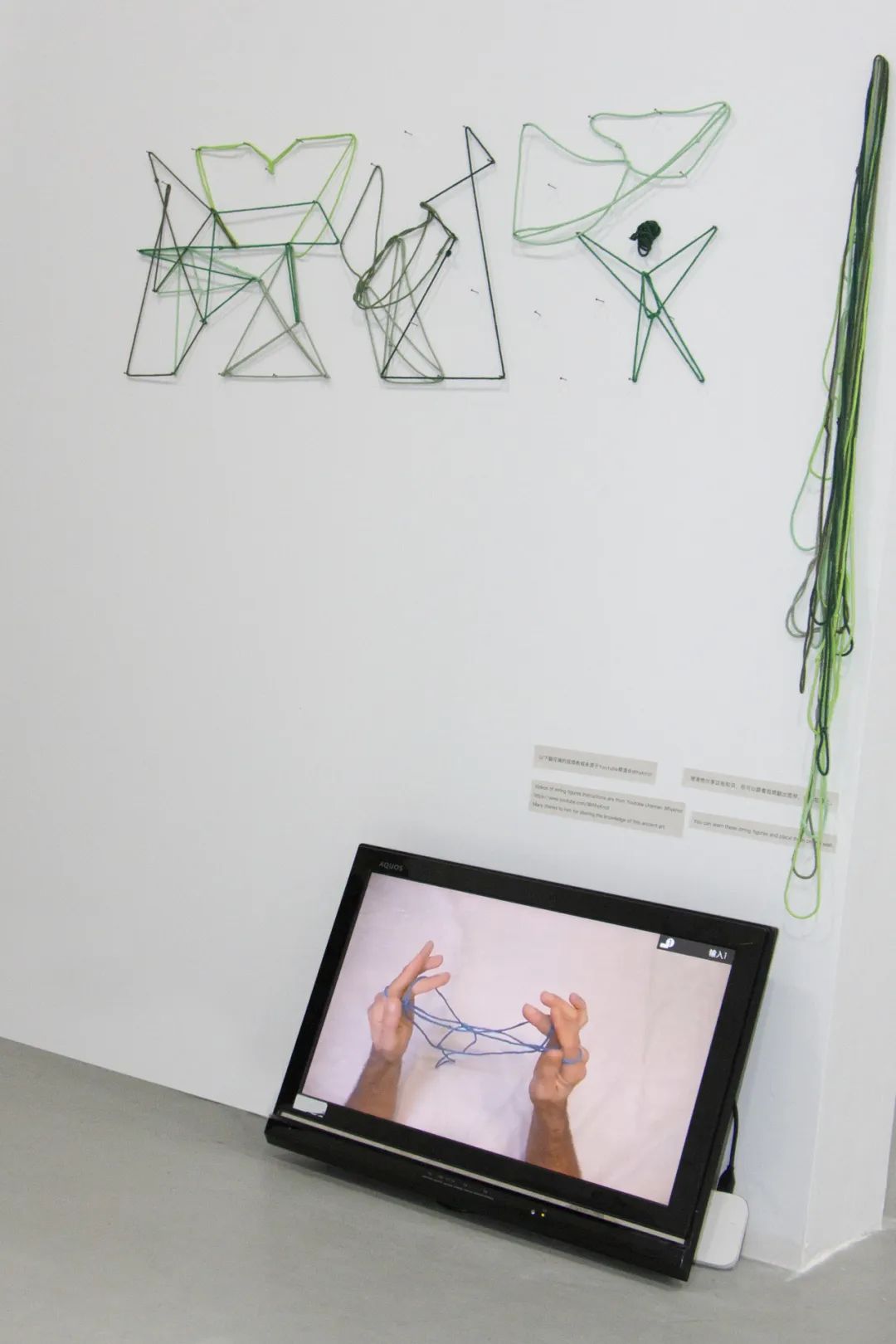
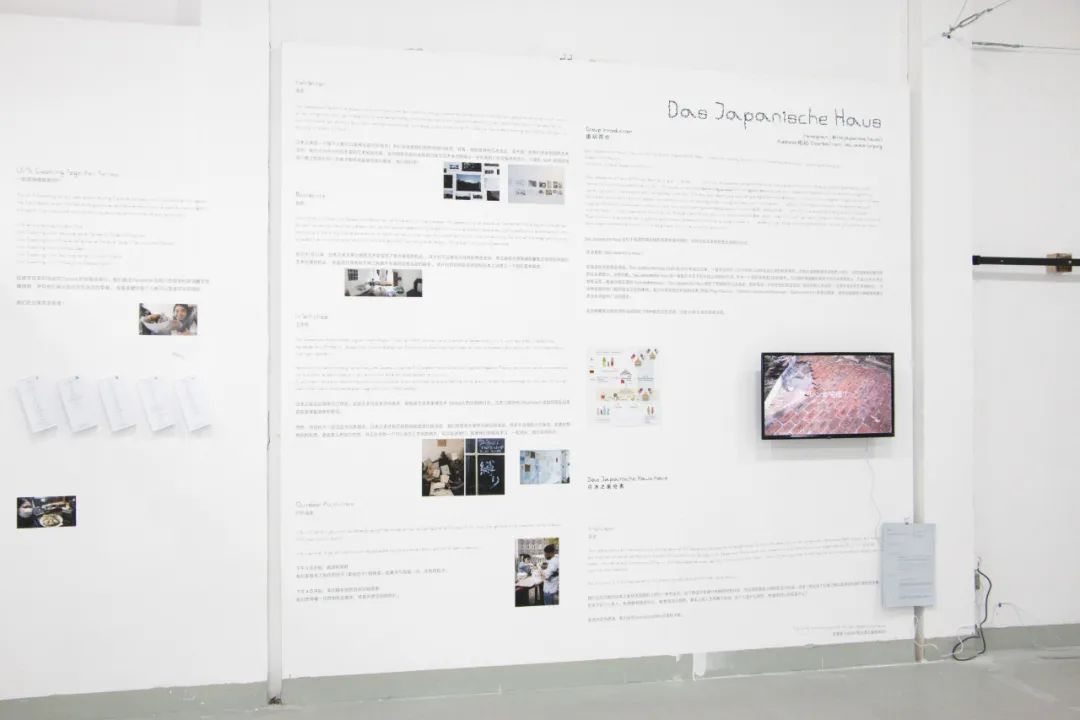
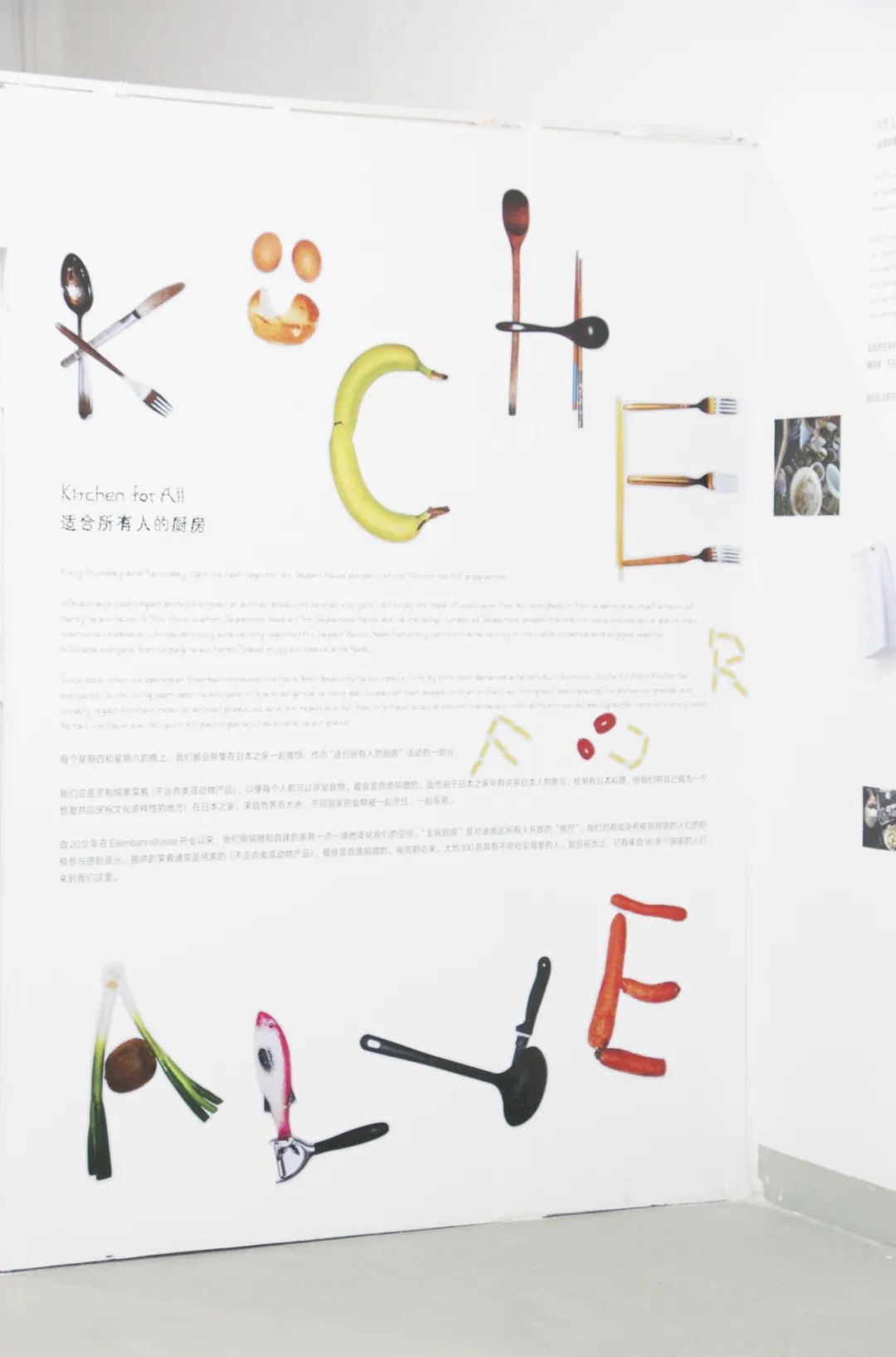
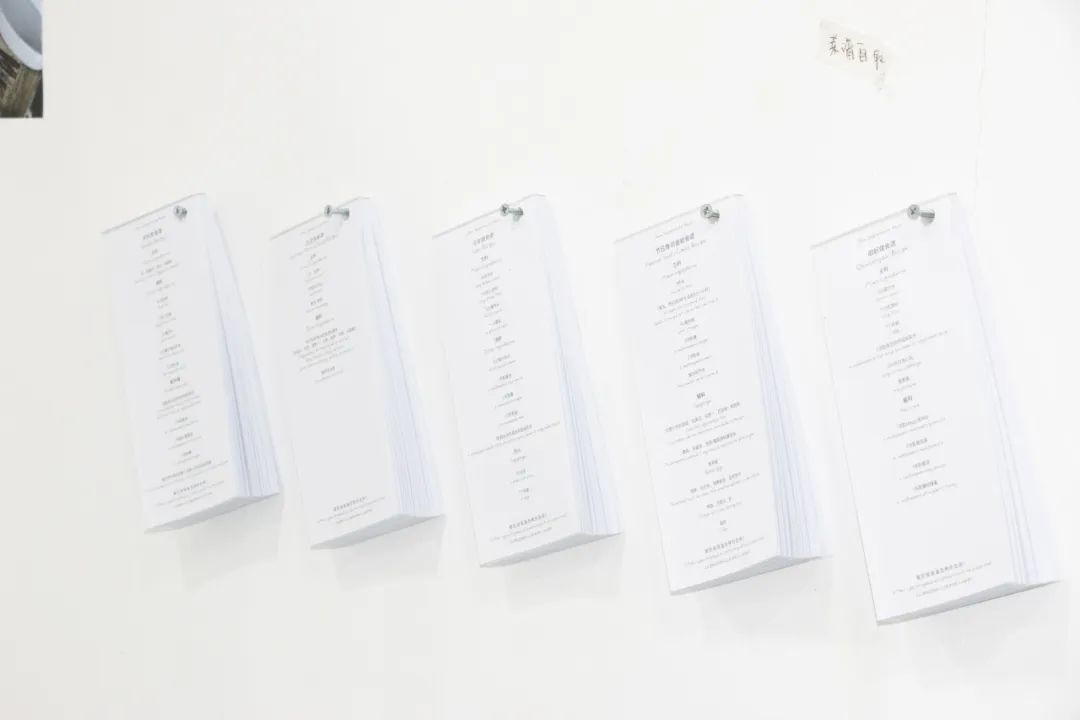
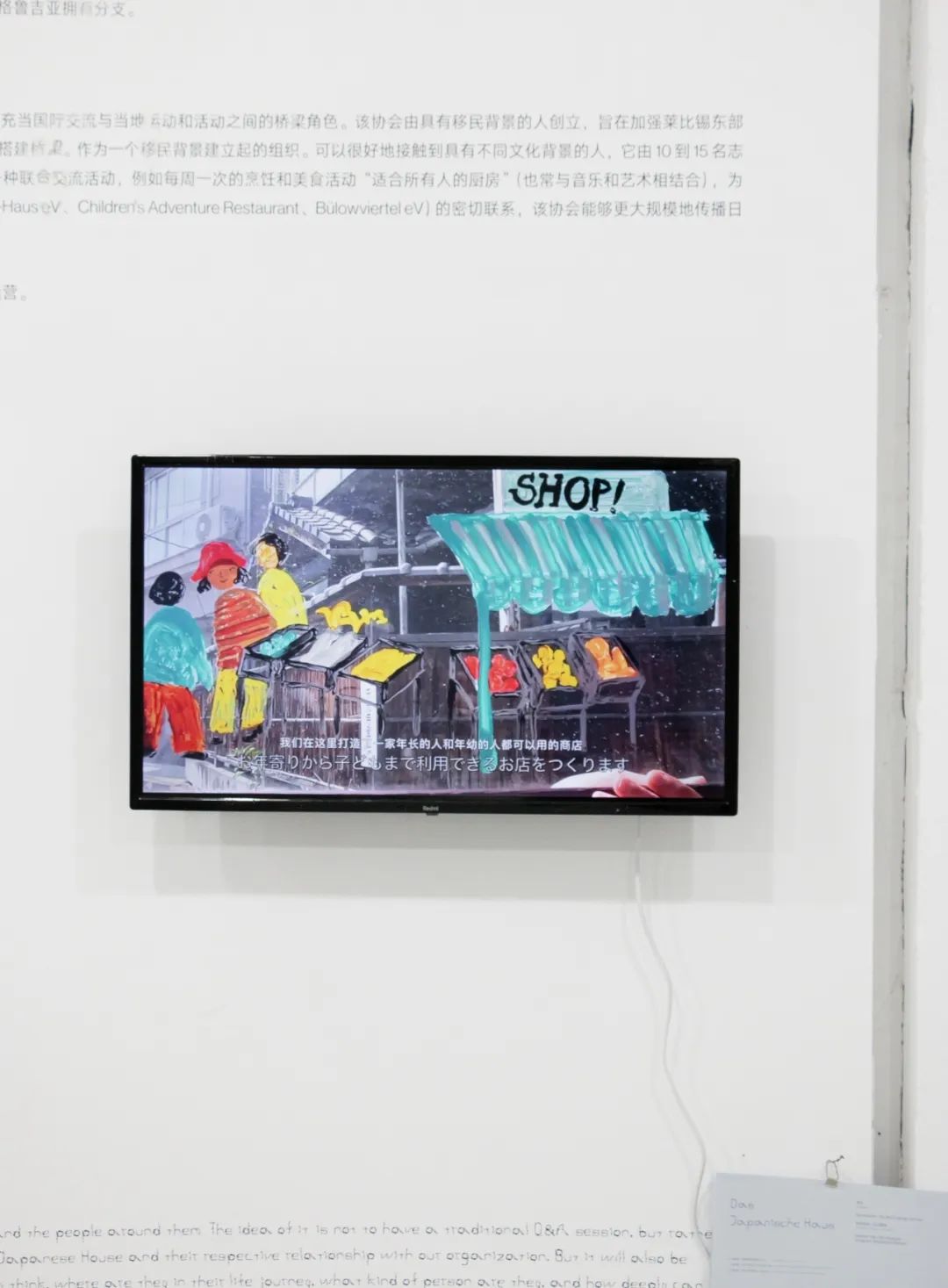
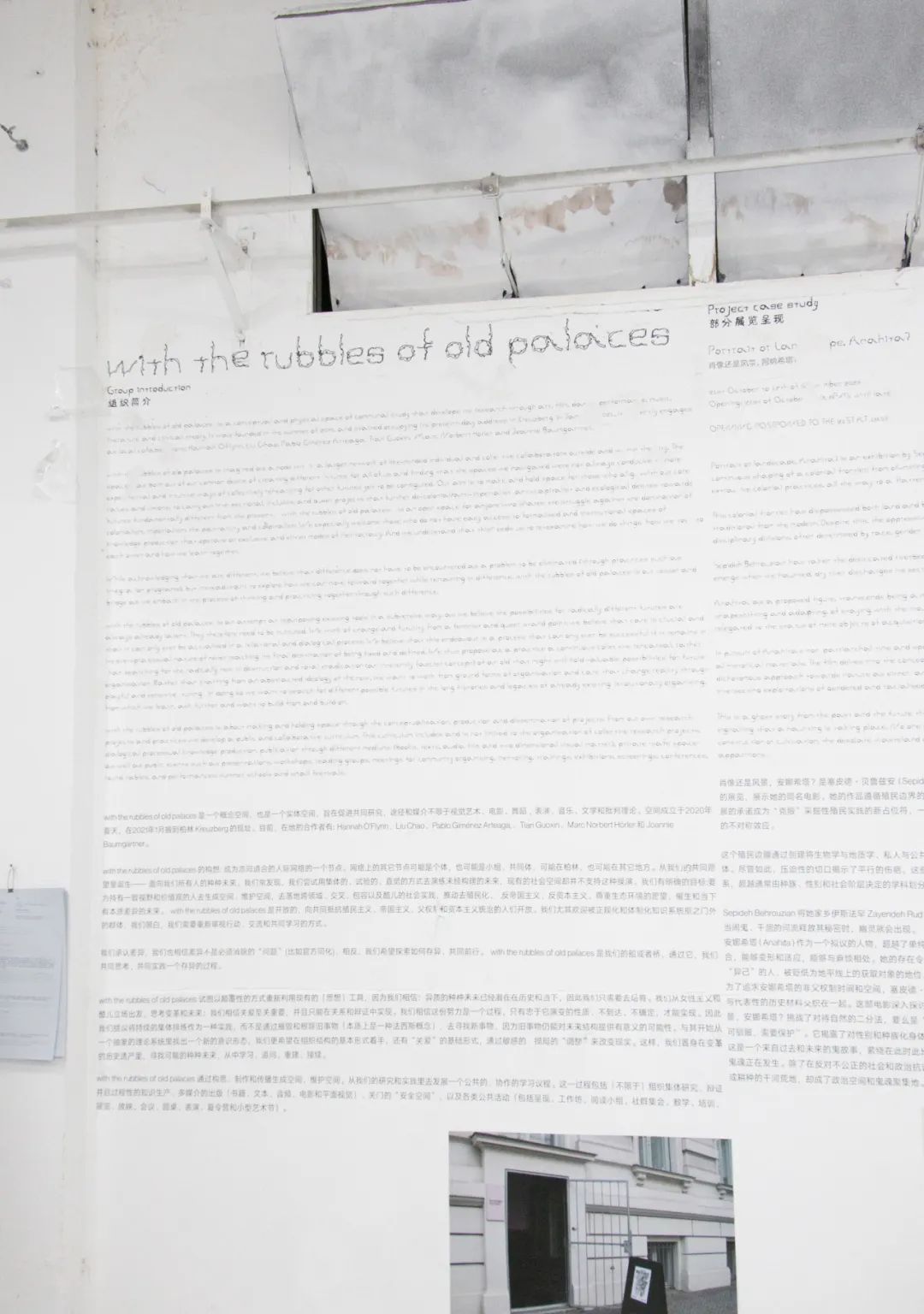
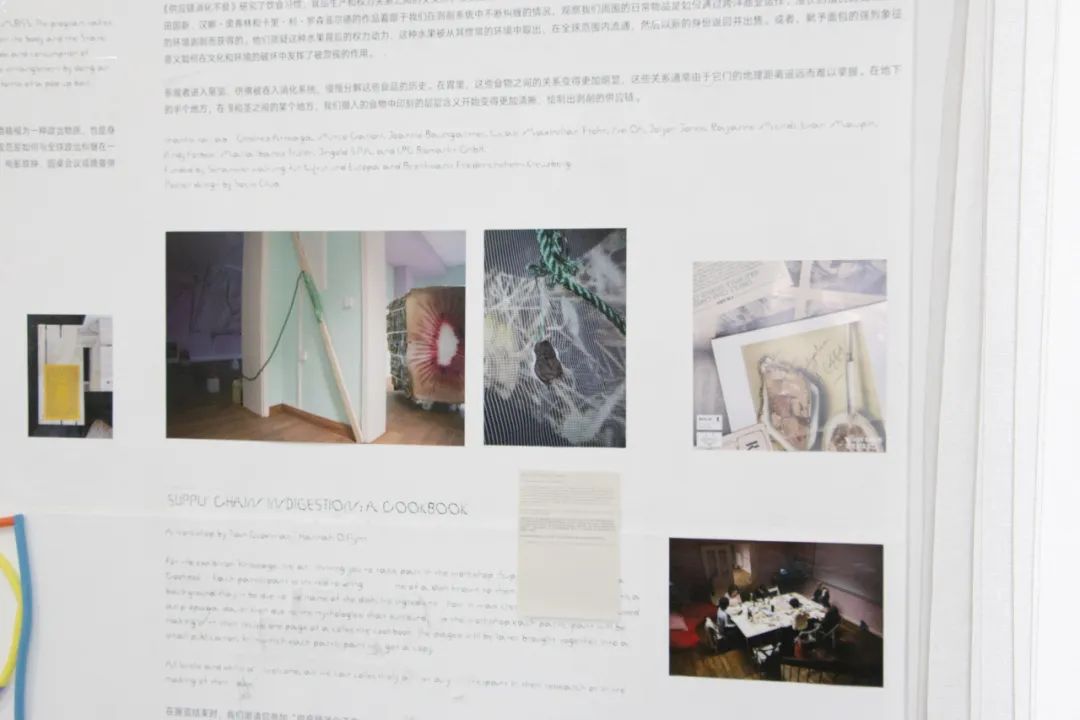
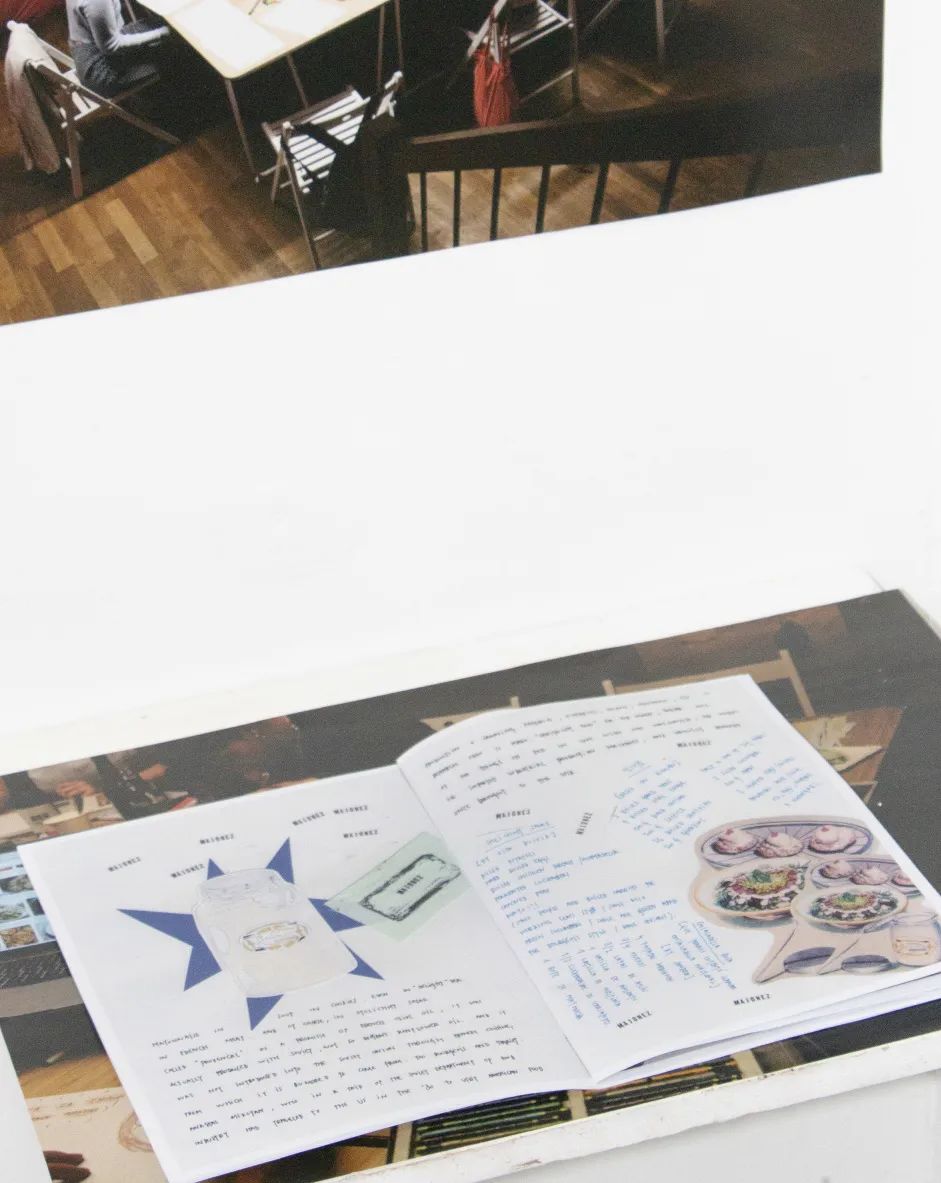
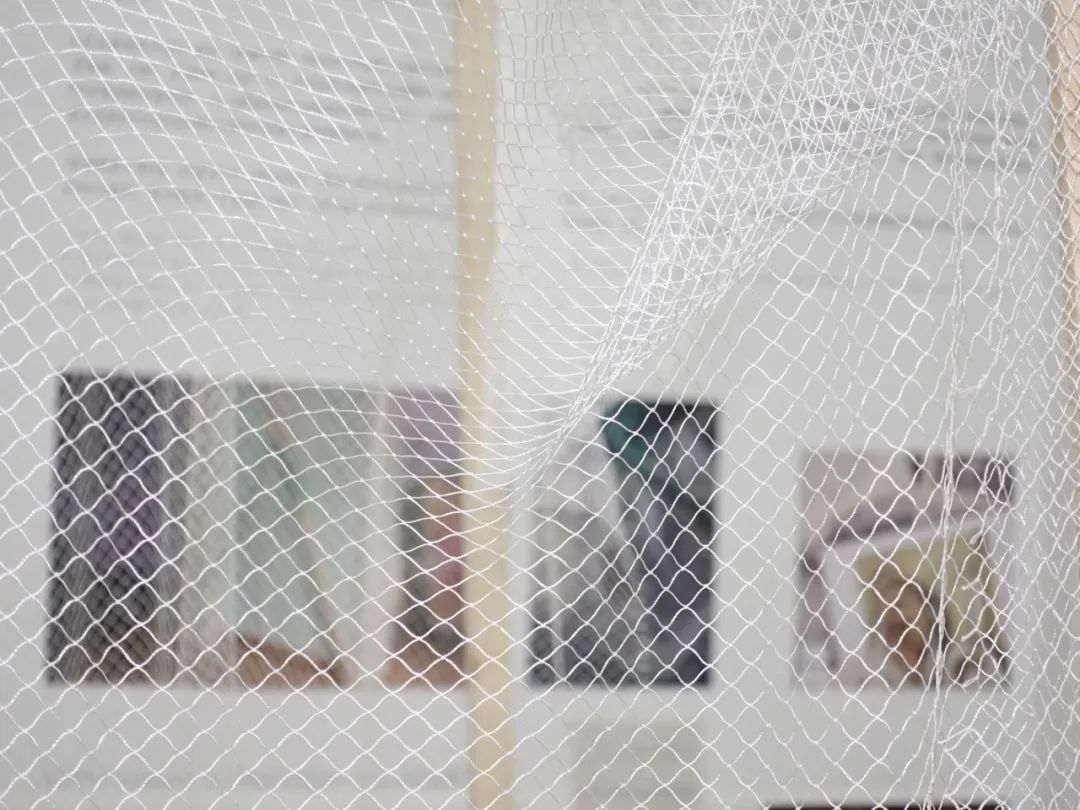
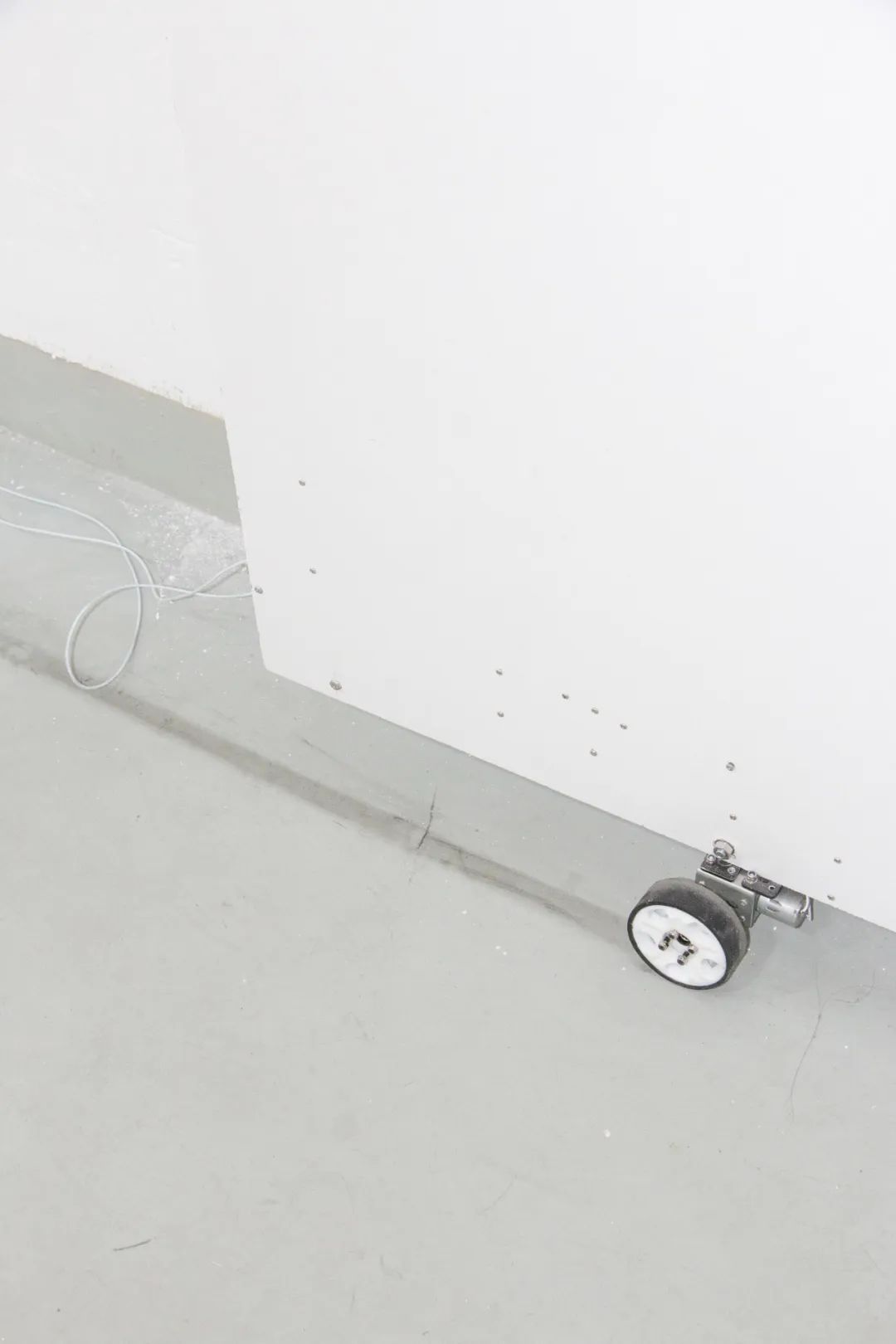
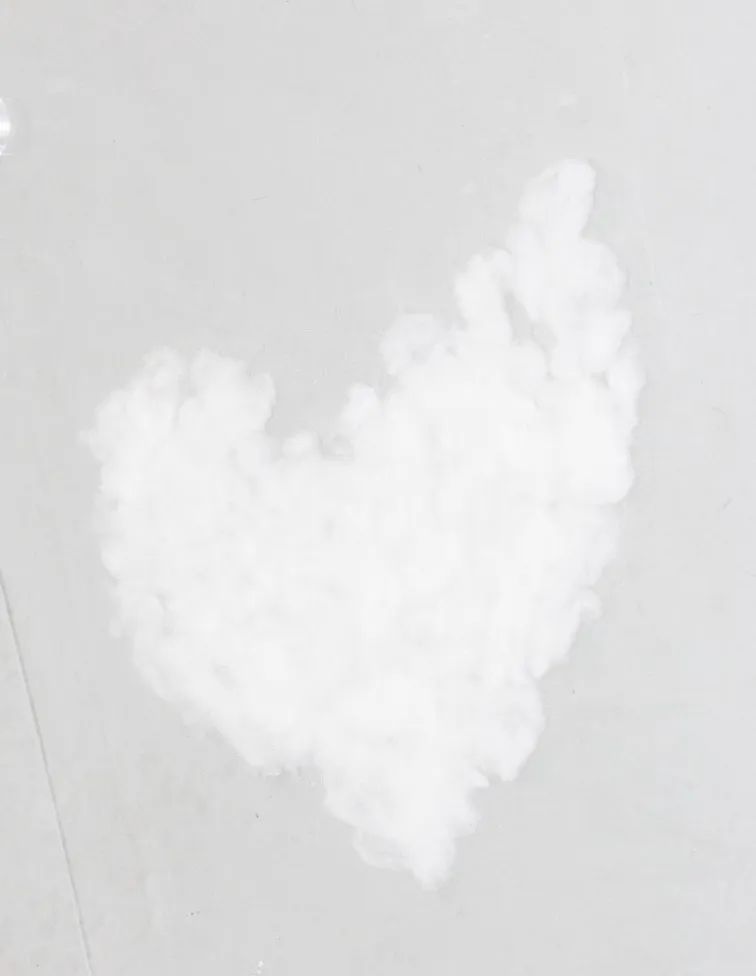
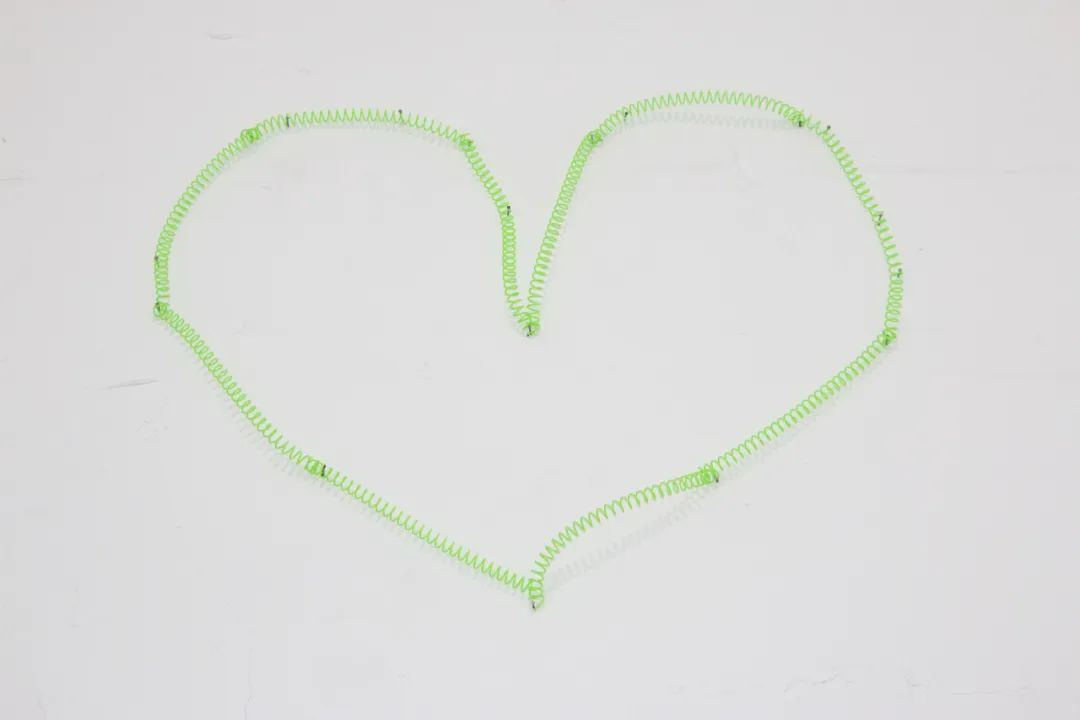
Exhibition Credits
Curated by Ruijing Ge, Huang Maobin,Wang Chang
Visual Design by yuchenghsiao
Special thanks:Herbr, Tian Zhiqin, Jing Wen, Lana Yang, Jin Hui, Zhou Yu, Yiwen, Kehan, Shao Jie, Ye yi, yue, Jack, Terrence